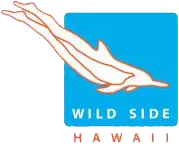

Intimate Wildlife Boat Tours with Expert Naturalists
- About Wild Side
- The Reviews
- The Place – Wai’anae, O’ahu
- Tour Overview
- “Best of the West” 3hrs
- Wildlife Photo Tour 6 hrs
- Show Hawaii Wildlife Aloha
- Hawaii’s Dolphins
- Hawaiian Spinner Dolphins
- Bottlenose Dolphin
- Spotted Dolphins
- Rough-toothed Dolphins
- Dolphins in Hawaiian Culture
- Whale Watching Hawaii
- Humpback Whales in Hawaii
- Pilot Whales
- Hawaiian False Killer Whales
- Pygmy Whales
- Melon-headed Whale
- Beaked Whales
- Sperm Whales
- Guided Sea Turtle Snorkel Oahu
- Green Sea Turtles
- Turtle Cleaning Station
- Hawaiian Monk Seal
- Whale Sharks | Oahu, Hawaii
- Eagle and Manta Rays
- Pelagic Birding | Hawaii
- Coral Spawning
- Kids Corner
- Take Action
- Frequenty Asked Questions
- How to Swim with Wild Dolphins Oahu
- How to Choose a Whale Watch Tour
- How To Teach Small Kids to Snorkel
- Snorkeling in Hawaii
- Best snorkel, free dive or scuba dive spots off Oahu’s West Coast beaches
- Wildlife Photography Tips
- Hawaii Wildlife Photos
- Wild Side Specialty Tours Reviews
- Wild Side in the News
- Citizen Science Oahu | Nature Tours that Malama Hawaii
- Wildlife Charter Job Postings Oahu Hawaii
- Internships
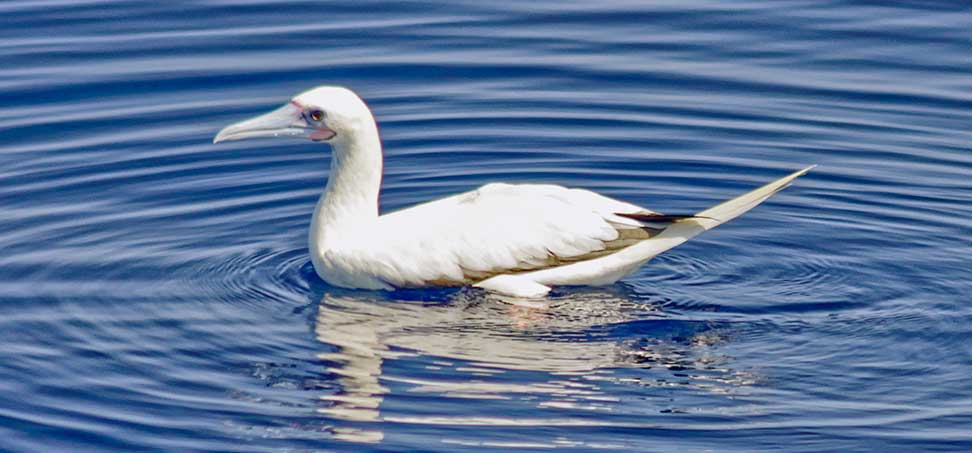
Pelagic Birdwatching (Seabirds)
wildlife tours with integrity, o’ahu.
Seabirds spend most of their life feeding and living on the open ocean, coming to land only to breed or nest. Hawaii has productive, food-rich waters that make it a major foraging area for thousands of seabirds such as albatross , terns, boobies, shearwaters, petrels, tropicbirds, and other offshore species. Nearby islands and small atolls also create important nesting habitat for the many migratory and resident bird species.
An estimated 15 million seabirds of 22 species are either flying over Hawaiian waters or breeding on Hawaiian islands at any one time. Still, these birds can be hard to spot because their true home is the open ocean.
Seabirds are made for life on the ocean, gliding on the wind, drinking sea water and eating fish and squid. Some birds remain at sea for years at a time, spending most of their time on the wing. The majority mate for life and return to the same area each year to raise their young. Males and females of most species look similar. Both share parenting duties.
Of Hawaii’s 22 species, two are found only in Hawaii. These seabirds — the dark-rumped petrel and the Newell’s shearwater — breed only in the main islands and are listed under the Endangered Species Act. Most of Hawaii’s other seabirds breed in the predator-free islands of the Northwest Hawaiian Islands chain.
Love on the Rock…
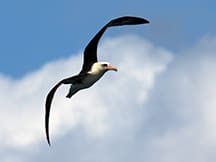
We are nearing the end of mōlī / Laysan Albatross season! Fledglings taking the first flights and leaving the nest in July. Since November when the adults returned from sea, we’ve viewed the mōlī nesting site at Ka’ena Point from our boat tour (often under their flight path!). Only a couple more months to view these endemic “Goony Birds” on one of the very few nesting grounds here on the main islands of Hawaii. The Hawaiian Monk seals (highly endangered and also endemic) are also hauling out and giving birth in the area.
Culturally Speaking
Excerpted from Conservation Hawaii’s “‘E M ā lama N ā Manu Kai O Hawai‘i Nei”:
Hawaiians watch the flights of seabirds to locate schools of fish, to help forecast the weather, and to locate islands when out at sea. Birds such as the manu o Kū are sometimes referred to as a navigator’s best friend because they occur in higher densities closer to islands and will lead a weary navigator home. Early Polynesians probably watched the flight patterns of migrating seabirds before setting sail to distant islands.
Hawaiian mythology includes stories of tropicbirds and ‘iwa being used as messengers for their gods. Feathers of tropicbirds and frigates also adorn Hawaiian k ā hili (feather standards) and ‘ahu ‘ula (feather capes), and lei.
Hawaiians once relied on seabirds as a food source. Seabird eggs were eaten and the birds were prized for their oily flesh, which tasted of squid. To catch the young petrel and shearwater chicks in their burrows, Hawaiians used smoke to disorient and disable flocks of adults flying to and from the nesting colonies.
Although seabird numbers on the main Hawaiian islands are far lower than they once were and they have lost most of their nesting grounds, there are signs of hope. Small populations of ‘ua‘u recently have been found on L ā na‘i and Hawai‘i, and mōlī have been successfully nesting on Kaua‘i and O‘ahu for the last 25 years – at sites where mammals are excluded and controlled. All seabirds are protected by the Migratory Bird Treaty Act.
Oahu Natural Area Reserve we can observe during your charter
Ka`ena Point
One of the largest seabird colonies in the eight main Hawaiian Islands is found here. Recent surveys have estimated approximately 2,000 seabirds use Ka‘ena Point as their breeding grounds, and many more than that use the area as a place of refuge. Home to nesting seabirds, monk seals, and other native coastal species. One of the rare places the Laysan Albatross (mōlī ) nest on the main islands. Other nesters included the Wedge-tailed Shearwater (‘ua ‘u kani) and the White-tailed Tropicbird (koa‘e ‘ula).
In Hawaiian, kaʻena means ‘the heat’ – and reportedly named after a brother or cousin of Pele who accompanied her from Kahiki. The State of Hawaiʻi has designated the point as a Natural Area Reserve to protect and encourage the nesting of the Laysan Albatross and the native strand vegetation (11 federally endangered species!). Within the reserve is leina a ka ‘uhane (Spirit Leap), which is considered to be a wahi pana , a celebrated legendary place. Early Hawaiians used Ka‘ena Point for fishing and feather collecting.
It can be reached by foot, but is a bit of a hike due to it really is hot there – or muddy (stick to your slippers kind) during cooler winter months. We can easily view this area by boat, but be sure and mention that it is ‘on your list’ as we may head off a different direction depending on what all is going on that day, or what guests are interested in.
M ā nana Island is a 63 acre volcanic tuff cone island. It is about 2300 feet long and 4200 feet wide. rises to about 360 feet at its highest point. There is a small beach on the southwest side of the island that is approximately thirty feet wide.
Today the island is a protected bird sanctuary and during the spring and summer the island is a breeding area for thousands of sooty terns, brown noddies., wedge-tailed shearwaters, bulwers petrels, adn red-tailed tropic birds. Mānana Island is a protected bird sanctuary and therefore it is not legal to land there unless you have permission from the Hawaii Department of Land Natural Resources.
Moku Manu Islets Seabird Sanctuary consists of two islets that totals 16.6 acres located off of Mōkapu Peninsula. Moku Manu is home to the most diverse and one of the densest seabird colonies in the Main Hawaiian Islands. Seabird species such as Wedge-tailed Shearwaters (ʻUʻau Kani), Black Noddy (Noio), Brown Noddy (Noio kōhā), Bulwer’s Petrel (ʻOu), Red-tailed Tropicbirds (Koaʻe ʻula), Sooty Terns (‘Ewa ʻEwa), Great Frigatebird (ʻIwa), Christmas Shearwater, Grey-backed Tern (Pākalakala), various Booby species, and various common shorebird species.
It has a relatively flat top, averaging about 165 feet in height but running up to 202 feet. The cliffs of Moku Manu drop directly into the sea around more than half of the island. Moku Manu is difficult to access and is closed to the public due to its status as a Seabird Sanctuary. However, activities like scientific research, conservation management, or subsistence, traditional, and customary practices by Native Hawaiians consistent with the long-term preservation of the wildlife sanctuary resources may be possible with a permit.
N ā Mokulua are part of the Hawaii State Seabird Sanctuary and activities on them as well as off-limit areas on them are regulated by law. Specifically, the smaller islet, Moku Iki, is off-limits to visitors, as is the interior of Moku Nui. Also, no pets are allowed. Many birds nest in ground burrows on the islands.
Mokulua Islets Seabird Sanctuary is composed of two islets, the larger northern islet, Mokulua Nui and smaller more southern islet, Mokulua Iki. Both islets are home to Wedge-tailed shearwaters (‘Ua’u Kani) for nesting. Along with that, other shorebird and seabird species can be seen there. These offshore islets are accessible to the public, but visitors are encouraged to stay below the high water line to reduce the chance of trampling seabird burrows.
Popoia, also known as Flat Island, is 4 acres in size and reaches a maximum elevation of 10 feet. True to its common name, the limestone islet is like a tabletop, although the surface is pitted with sink holes often used by nesting seabirds. It lies about 350 yards offshore from Kailua Beach Park in Kailua Bay on the windward coast of Oahu. The north, west, and south sides of Popoia are surrounded by a jagged reef. Visitors frequently land at the sandy cove on the southwest side. The ecosystem of the islet is vegetated coral which is utilized primarily by ʻuaʻu kani or Wedge-tailed shearwaters, ʻou or Bulwer’s Petrel, and pigeons. ‘Opae‘ula can also be spotted on this islet.
SELECTED BIRDS FOUND ON HAWAII’S OFFSHORE ISLETS The following list highlights some of the most common bird species, especially seabirds, found in Hawaii’s offshore islets. There are, however, several species not included on this list. Each species is classified as either endemic, indigenous, or introduced. Bishop Museum Offshore Islet Project There are at least 54 islets that lie offshore of the main Hawaiian Islands. These islets are uninhabited and mostly located within 10 km of the coast. They act as preserves for species and ecosystems that have been lost or are disappearing from the main islands. Although Hawaii has only 0.2% of the land areas of the U.S., 75% of the species historically documented to have gone extinct in the U.S., and 33% of the nation’s endangered species are endemic to Hawaii.
The Birds of the Hawaiian Islands: Occurrence, History, Distribution, and Status from the Hawaii Biological Survey

Birding Worldwide with Premier Local Guides and Top Logistical Expertise
Birding Hawaii Extravaganza: 3 Key Islands for Birding: Oahu Island, Kauai and Big Island Plus Pelagic Day

Most birders add over fifty and sometimes sixty bird species to their ABA list with this trip to three of these endemic-rich/specialty-rich islands of Hawaii. You will love seeing over twenty Hawaiian endemic bird species (see below). You will see some of the islands’ other specialty birds including Red-footed Booby, White Tern, Mariana Swiftlet, Bristle-thighed Curlew, two (sometimes three) species of tropicbirds, plus more.
More details about this trip:

This tour also adds a pelagic trip (best February/March and September to November) and also adds another dozen species, including Newell’s Shearwater, Laysan Albatross, and more. This will also add more chances (as compared to the land only Hawaiian tour) to see Hawaiian Petrel and all the Tropicbirds (including Red-tailed Tropicbird).
A number of spectacular introduced species (see list below) are now countable in the ABA area and will also add to your tally of ABA-area birds. Likely species include Greater Necklaced Laughingthrush, Japanese Bush Warbler, Chinese Hwamei, Chestnut-bellied Sandgrouse, Red Avadavat and Kalij Pheasant.

The Hakalau Forest National Wildlife Refuge (Honey Creeper Heaven) offers one of the top Hawaiian birding experiences. In one day, you will likely see ten Hawaiian endemic bird species, including six species of honeycreepers (Hawaii Creeper (Alawi), Apapane, I’iwi, Hawaii Amakihi, Hawaii Akepa and Akiapolaau). Plus, you will see several other Hawaiian endemic bird species, including Hawaiian Hawk, Hawaiian Goose, Puaiohi, Omao and Hawaii Elepaio. Because this is a restricted area, the birding group will have the place to themselves (on most visits).
Pricing: $5,890 USD, for 9 Days and 8 Nights
Group Size: Price is based on a group size of 7 participants.
Upcoming Dates:
October 25 to November 3, 2024
March 23 to 31, 2025
Video Conference on Hawaii Birding with
(see link below)
Humpback Whale, Hawaiian Monk Seal, Spinner Dolphin, Spotted Dolphin, Short-finned Pilot Whale
Hawaiian native species: Hawaiian Goose, Hawaiian Duck, Hawaiian Coot, Pacific Golden-Plover, Bristle-thighed Curlew, Brown Noddy, Black Noddy, White Tern, White-tailed Tropicbird, Red-tailed Tropicbird, Laysan Albatross, Hawaiian Petrel, Bulwer’s Petrel, Wedge-tailed Shearwater, Great Frigatebird, Brown Booby, Red-footed Booby, Hawaiian Hawk, Hawaii Elepaio, Kauai Elepaio, Oahu Elepaio, Omao, Palila, Apapane, Iiwi, Akiapolaau, Anianiau, Hawaii Amakihi, Oahu Amakihi, Kauai Amakihi, Hawaii Creeper, and Hawaii Akepa. Additional pelagic species possible, depending on the time of year, may include Band-rumped Storm-Petrel, Leach’s Storm-Petrel, Juan Fernandez Petrel, Black-winged Petrel, Mottled Petrel, Newell’s Shearwater, and Christmas Shearwater.
Rare but possible endemics: Puaiohi, Akikiki, and Akekee.
Introduced species: Erckel’s Francolin, Black Francolin, Gray Francolin, Red Junglefowl, Kalij Pheasant, Spotted Dove, Zebra Dove, Chestnut-bellied Sandgrouse, Mariana Swiftlet, Rose-ringed Parakeet, Eurasian Skylark, Red-vented Bulbul, Red-whiskered Bulbul, Japanese Bush Warbler, Japanese White-eye, Chinese Hwamei, Greater Necklaced Laughingthrush, Red-billed Leiothrix, White-rumped Shama, Yellow-fronted Canary, Red-crested Cardinal, Yellow-billed Cardinal, Saffron Finch, Common Waxbill, Red Avadavat, African Silverbill, Scaly-breasted Munia, Chestnut Munia, and Java Sparrow
Other Highlights
Waikiki beach, koolau mountains, alakai wilderness preserve, kokee state park, mauna kea, mauna loa, hakalau forest national wildlife refuge, and hawaii volcanoes national park. we can help you with trip extensions, including a pelagic birding adventure and a visit to pearl harbor., zoom video conference on hawaii birding with pib guide:.

Voted the Best Boat Tour in the US!

Hawaii Sea Birds
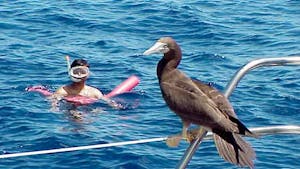
Pelagic seabirds are quite amazing, with their long, thin wings that allow them to fly for days and even weeks at a time without stopping. They have special glands that extract salt from their bodies, allowing them to drink saltwater and ingest salt water through their oceanic prey without building up toxic amounts in their systems. Pelagic birds rest on the surface of the water occasionally, but incredibly, spend most of their lives in the air, commonly only stopping on land to nest and breed.
The Hawaiian Islands (and particularly the Northwest Hawaiian Islands) provide a critically important habitat to millions of migratory and nesting Pacific pelagic seabirds. In 1909, Teddy Roosevelt had the foresight to designate the Hawaiian Islands National Wildlife Refuge, which extends about 800 miles northwest of Kauai and provides a safe habitat for seabirds, as well as green sea turtles, monk seals, and many fish and plant species. Lehua Crater (one of the islands we visit on our Niihau + Napali Super Tour) is one of Hawaii’s most important designated seabird sanctuaries, due to its size, height above water and lack of predators.
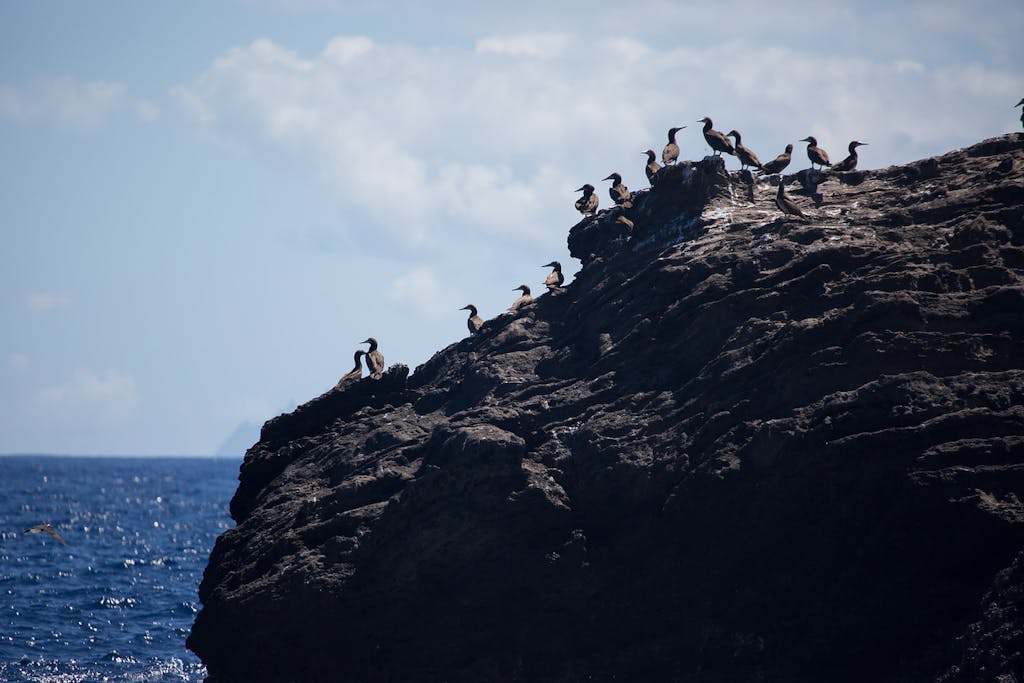
In general, hardy pelagic seabirds live longer, breed later, and invest more time into fewer young than their cousins on land. They nest in colonies that can range from dozens to millions of birds. Many species are famous for undertaking long annual migrations, crossing the equator, and even circumnavigating the Earth.
Seabird species you’re likely to see on our Kauai boat tours and Niihau boat tours include albatross, boobie birds, frigate birds, shearwaters, petrels, tropicbirds, and tern. Two species are endemic to Hawaii and listed on the Endangered Species List: the dark-rumped petrel and the Newell’s shearwater.
Bring your binocs and happy birding!

Listing and Taxonomy

American Birding Association Checklist Committee (CLC) Report, March 2024

ABA Area Field Guides
The American Birding Association Field Guides each include hundreds of species birders are most likely to see in their state or province. Illustrated with crisp, color photographs, they include descriptions of each bird along with tips of when and where to see them, and are written by local expert birders.
- Welcome New Birders!
- Birding News
- ABA Checklist
- Listing & Taxonomy
- ABA Field Guides
- ABA Rare Bird Alert
- Festivals & Events
- Birding Clubs & Organizations
- ABA Area Birding Trails
- Listing Central
- ABA Code of Birding Ethics
Latest Podcast, Articles, & More…

08-14: Random Birds, Special Edition, with John Lowry & Ted Floyd

ABA Hiring Summer Camp Nurse
Rare bird alert.

Rare Bird Alert: March 29, 2024
Field ornithology.

First Red-flanked Bluetail in the Eastern ABA Area
- Book Reviews

The Fight to Protect the Birds

March 2024 Photo Quiz
How to know the birds.

How to Know the Birds: No. 81, A Kinglet Assist from Merlin
Birds and....

No. 25: Birds and Nests
- Birding Magazine

Birding Online: March 2024
North American Birds

North American Birds: Vol. 74, No. 2
Section home pages.
- American Birding Podcast
- NAB Regional Reports
- Identification
- ABA Publications Archive
- ABA Young Birders

ABA Young Birder Program includes ABA Young Birder Camps, the ABA Young Birder Mentoring Program, and the young birder magazine, The Fledgling.

When you travel with ABA, you help build a better future for birds, birders, and birding. We combine great field birding, amazing destinations, and cultural immersion, while supporting local communities.

Birders’ Exchange provides birdwatching equipment and resources to organizations in the United States, Canada, Latin America, and the Caribbean with an educational need.

The American Birding Association is proud to partner with Thanksgiving Coffee Company to bring you Song Bird Coffee. Song Bird is grown on small farms that have been certified Bird-Friendly by the Smithsonian Migratory Bird Center, the gold standard for shade-grown, organic coffees.
ABA Community Weekends

ABA Community Weekends bring birders together near you! With the help of local friends and partners, we offer guided bird walks, workshops, and gatherings in cities across the U.S. and Canada and it’s free to participants.
- Travel and Events
- Birders’ Exchange
- ABA Song Bird Coffee
The ABA is a non-profit 501(c)(3) organization that inspires all people to enjoy and protect wild birds.
Please join us as we leverage our extensive knowledge, expertise, connections, and world-class content to bring more people into the birding community.

- My Membership
- Join ABA Community
- Flight Calls newsletter
- Matching Gifts
- Gift Planning
- Search for:
- WooCommerce Cart 0

Hawaiʻi birding tour
April 2–11, 2024.
Hawaiʻi is a magical place for birdwatchers. The archipelago’s isolation and volcanic landscape have forged unique ecosystems that are home to dozens of bird species found nowhere else on Earth. From lowland waterbirds like the iconic Nēnē (Hawaiian Goose) to higher-elevation forest birds such as the Hawaiian honeycreepers, each elevation, and each island has its suite of endemics. Join the ABA and Hawaii Bird Tours in exploring the ornithological wonderland of the Hawaiian Islands!

Brief itinerary
Specialty birds:.
Iiwi, Hawaii Amakihi, Kauai Amakihi, Oahu Amakihi, Apapane, Hawaii Creeper, Akepa, Akiapolaau, Palila, Anianiau, Hawaii Elepaio, Kauai Elepaio, Oahu Elepaio, Omao, Red-billed Leiothrix, White-rumped Shama, Warbling White-eye, Yellow-fronted Canary, Common Waxbill, Chestnut Munia, African Silverbill, Saffron Finch, Yellow-billed Cardinal, Red-crested Cardinal, Eurasian Skylark, Pacific Golden Plover, Wandering Tattler, Bristle-thighed Curlew, Hawaiian Coot, Black-necked Stilt, Hawaiian Goose, Short-eared Owl, Hawaiian Duck, Hawaiian Hawk, Erckel’s Spurfowl, Black Francolin, Gray Francolin, Chestnut-bellied Sandgrouse, Kalij Pheasant, Wedge-tailed Shearwater, Newell’s Shearwater, Bulwer’s Petrel, Hawaiian Petrel, Mottled Petrel, Juan Fernandez Petrel, Leach’s Storm-Petrel, Band-rumped Storm-Petrel, Great Frigatebird, Red-footed Booby, Brown Booby, Masked Booby, White-tailed Tropicbird, Red-tailed Tropicbird, Laysan Albatross, Brown Noddy, Black Noddy…
Hawaiian Monk Seal, Green Sea Turtles, cetaceans…
Landscape, scenery, habitats:
We will journey through some of the world’s most gorgeous beaches into an array of habitats, from sub-alpine dry forest amongst glacial gulches to lush wet forests scattered with cascading waterfalls with views of rugged lava fields and snow-capped volcanoes along the way.
Culture, history:
Hawaiian culture and history
Supported projects:
- Pacific Rim Conservation
- Friends of Hakalau Forest National Wildlife Refuge
Practical details
Dates : April 2-11, 2024
Number of days and nights: 10 days / 9 nights
Start and end point:
- Starting: 2 April 2024, Honolulu (HNL)
- Finishing: 11 April 2024, Kona (KOA)
- Queen Kapiolani Hotel, Oʻahu
- Sheraton Kauaʻi Coconut Beach Resort, Kauaʻi
- Royal Kona Resort, Big Island
Group size:
- Minimum number of participants: 8
- Maximum number of participants: 20
Guides and ABA staff: 1 Belizean lead guide and 1 ABA staff for up to 14 participants, 2 guides and 2 ABA staff for 15 to 20 participants
Birding pace:
Medium: The number of species and diversity may be limited compared to some continental birding locations, but this only allows us some more time to enjoy the scenery and highlight some of the history, geology, flora, and other fauna. The birds and wildlife endemic to Hawaiʻi can be difficult to track down, meaning that most outings will be target species driven, and although we don’t have long, grueling hikes in the itinerary, we can easily spend hours searching for just a few. As most of the nocturnal seabirds aren’t in accessible areas, meaning there is no night birding planned.
Photography opportunities:
Medium: Many of the endemic species we are targeting are endangered. We will NOT be using playback on any of the native species, whether they are endangered or not, especially since our tour is during the breeding season. We will use playback for non-native birds, especially skulking species like Hwamei, Greater Necklaced Laughingthrush, Japanese Bush Warbler, and Red-billed Leiothrix. Other species aren’t shy or afraid of people at all, like Laysan Albatross, and the sometimes inquisitive elepaios.
Physical difficulty:
Medium: To reach the highland forests where the native birds are found and searching for pelagic birds by boat, will require us to start some of our days early, as we’ll want to be near our destinations before the typical Hawaiʻi trade wind patterns bring afternoon showers and light wind. Other departures will be more leisurely, but we do make sure we are out in the field when bird activity is highest and the heat and/or chance of rain is lowest. Much of our birding will be easy walking on roads, wide trails, standing, and boats. The Koʻolau valley trails, where we will search for Oʻahu ʻElepaio, can often be rocky, humid, slippery, muddy, and buggy with a gradual and slight elevation gain. The Alakaʻi, bordering Kōkeʻe, is a montane wet forest, with temperatures ranging from 50-80°F around 4,000 ft above sea level, and is still known to be one of the wettest places on Earth. Hakalau Forest NWR, where most of Hawaiʻi’s remaining endemic forest birds live, is also a montane rainforest. Even if it’s not raining, it will most likely be wet, slippery, and muddy with temperatures ranging from 50-70°F around 6,400 ft above sea level. Quick dry layers, sun protection, rain gear, and waterproof hiking shoes with good grip and ankle support are recommended. Birding along the coastlines will be within a short walk from the van. You should be able to easily get in and out of a van (sometimes repeatedly), and be comfortable walking at least two miles, some of it on slopes where traction may not be the best and where footing is uneven. You should be prepared to bird in hot and humid environments, expect some mud and rain, and realize the highlands can be quite brisk or even cool. Sea conditions on the pelagic trips can be quite warm and range from calm seas to moderately rough, so you must have decent balance and the ability to steady yourself on a moving boat. Those with balance and stability issues should bring collapsible walking sticks and those who find it difficult to stand for long periods of time should bring a small travel stool.
Price and booking
- $7,500 per person in double occupancy (twin or double)
- $1,550 single supplement
- 9 hotel nights
- 3 meals per day from dinner on day 1 to breakfast on day 10
- All local private transportation to and from sites visited and transportation from airport to hotel and day 1 and from hotel to airport on day 10
- All guiding fees for tour leaders and local guides
- All entrance fees to sites mentioned in the itinerary
- All activities as described in the itinerary
Not included:
- Transportation to and from Hawaiʻi (starting in HNL and finishing in KOA)
- Alcoholic beverages
- Purchases of a personal nature, including (but not limited to) laundry service, room service, phone calls, toiletries, souvenirs etc.
- No insurance is included. We strongly recommend you get your own travel, cancellation, and medical insurance
- Extensions of the trip due to circumstances out of our control
- Any tips you would like to offer tour leaders, guides, drivers, porters, wait staff, housekeeping, etc. for outstanding service
Optional add-ons:
If you want to arrive before April 2, 2024, or leave after April 11, 2024, we can book extra hotel nights in Oʻahu and Big Island for you, at an additional fee. You can indicate this in your booking form.
Terms and conditions:
aba.org/terms-conditions
Booking and secure payment:
Detailed itinerary, april 2, 2024: arrival day in honolulu, oʻahu.
Upon arrival in Honolulu (HNL), get in touch with your pre-arranged shuttle to our hotel in Waikīkī, where has been reserved a room in your name. Check-in is any time after 3 pm. If you arrive early, you can easily stash your luggage with the hotel staff and walk across the street to enjoy birding in Kapiolani Park, walk less than a block to the world-famous Waikīkī beach, or wander into the heart of Oʻahu’s tourist district on foot to explore historic properties, souvenir shops, or local grinds and libations.
We will gather in the lobby at 6 pm to meet new friends before our welcome dinner together.
Night in Waikīkī
April 3, 2024: Searching for endemic birds around Oʻahu’s south side
After breakfast at our hotel, we will leave the city behind and enter the rainforests of the Koʻolau Mountains in pursuit of Oʻahu’s endemic honeycreeper, the Oʻahu ʻAmakihi, before we stop in Kapiʻolani Park to admire visiting Pacific Golden Plovers and Honolulu’s city bird, the beautiful White Tern. While exploring the park we are sure to encounter a myriad of introduced species among the banyan and rainbow shower trees, such as Common Myna, Red-crested Cardinal, Red-vented Bulbul, Yellow-fronted Canary, Java Sparrow, Common Waxbill, Spotted Dove, Zebra Dove, and Rose-ringed Parakeet. After grabbing lunch to go from a local cafe we indulge along a rugged coastline amongst nesting Red-tailed Tropicbirds before we transcend down into a lush valley in search of the endangered Oʻahu ʻElepaio. While on our endemic bird adventure, we will most likely encounter Whtie-rumped Shama, noisy flocks of Red-billed Leiothrix, an occasional Red-whiskered Bulbul, and chattering Warbling White-eyes with a stop to admire.
April 4, 2024: Birding Oʻahu’s north shore
Today we journey up the picturesque windward side to experience the serenity of Oʻahu’s North Shore in search of visiting shorebirds, such as the Wandering Tattler and sought-after Bristle-thighed Curlew. While cruising the coastline, famous for world-class surf beaches and secluded coves with basking sea turtles, we are sure to find some flashy finches, such as the Saffron Finch and Chestnut Munia. The North Shore is also home to some of the last family farms on Oʻahu with crops of coffee, cacao, eggplant, papaya, pineapple, apple banana, and even scattered shrimp farms with Black-crowned Night Heron, the endemic Hawaiian Coot, Common Gallinule (endemic subspecies), and Black-necked Stilt (endemic subspecies).
April 5, 2024: Flight to Kauai and birding Kauai’s north shore
After breakfast we fly to Līhuʻe and discover the beauty of Kauaʻi ’s north shore in pursuit of impressive seabirds along Kīlauea Lighthouse NWR’s stunning coastline and more endemic water birds amongst Hanalei NWR’s historic loʻi ponds. While scanning the rugged cliffs of Kīlauea covered with Red-footed Boobies and surveying the skies for Brown Booby, spectacular Red-tailed and White-tailed tropicbirds, majestic Laysan Albatross, and soaring Great Frigatebirds, we will enjoy up close views of Hawaiʻi’s state bird, the Nene (Hawaiian Goose). We will then explore Hanalei valley’s lush important bird area for more of Hawaiʻi’s endangered water birds, such as the Hawaiian Duck.
Night in Kapaʻa
April 6, 2024: Birding Kōkeʻe on Kauaʻi
We embark on a rainforest adventure with astounding views of Waimea Canyon, the Pacific’s Grand Canyon, on our journey into Kōkeʻe State Park to find Kauaʻi ‘s endemic Kauaʻi ʻ Amakihi, ʻ Apapane, ʻ Anianiau, and Kauaʻi ʻElepaio . Other forest birds we should encounter in Kōkeʻe include Red Junglefowl, the skulking Japanese Bush Warbler, and the shy melodious Chinese Hwamei.
April 7, 2024: Birding Kauaʻi and flight to Big Island:
On our last morning on Kauaʻi we will search for the rare Greater Necklaced Laughingthrush and any of Kauaʻi ’s specialty species we haven’t already found before our afternoon flight.
Night in Kona
April 8, 2024: Birding Big Island’s leeward side
We begin our day on a quest for Hawaiʻi ʻElepaio and Hawaiʻi ʻAmakihi, with hopes of finding one of the last critically endangered Palila. On our way to the sub-alpine dry forests of Māmane, ‘iliahi, and naio at elevations of 7,000 -9,000 ft. above sea level, we will bird Saddle Road for Short-eared Owl (endemic subspecies), Eurasian Skylark, Chukar, California Quail, Erckel’s, Black, and Gray francolins and more. From the high elevations of Puʻu Laʻau along the slopes of Mauna Kea, we will drive through Waikoloa in search of more introduced species, like Chestnut-bellied Sandgrouse, African Silverbill, and Yellow-billed Cardinal.
Night in Kona
April 9, 2024: Birding Big Island’s windward side
Experience Hakalau aka Hawaiʻi’s honeycreeper heaven! Hakalau Forest NWR is a publicly restricted cloud forest reserve and is home to many of Hawaiʻi’s endangered plants, native arthropods, and endemic birds. We will search for the unique Hawaiʻi ʻ Alawī (creeper), the gorgeous day glow orange male Hawaiʻi ʻAkepa , the stunning long-billed ʻAkiapōlāʻau , the ʻIo ( Hawaiian Hawk), and ʻŌmaʻo ( Hawaiʻi Island’s endemic thrush) with beautiful Iʻiwi, Hawaiʻi ʻ Amakihi, and ʻ Apapane all over the blossoms of ancient ʻ Ohiʻa trees enshrouding us.
April 10, 2024: Pelagic birding off Big Island
We embark on a pelagic birding charter out of Honokohau Harbor with an experienced local captain for Black Noddy, Brown Noddy, Sooty Tern, Brown Booby, Red-footed Booby, White-tailed Tropicbird, Great Frigatebird, Wedge-tailed Shearwater, Sooty Shearwater, and Bulwer’s Petrel with hopes of finding: Masked Booby, Hawaiian Petrel, Black-winged Petrel, Mottled Petrel, Juan Fernandez Petrel, White-necked Petrel, Newell’s Shearwater, Christmas Shearwater, Leach’s Storm Petrel, Band-rumped Storm Petrel, all three jaegar species, South Polar Skua, incidental cetacean sightings, and more!
April 11, 2024: Departure Day from Kona, Hawaiʻi
Depart for home from Kona airport (KOA) after breakfast at your leisure from 6:30-10:30 am.
Hotel check-out is 11 am.
Related Posts

2024 Bird of the Year Tour: Sax-Zim Bog and Northern Minnesota

Belize birding tour

Newfoundland Adult Birder Camp – FULL!

Borneo birding tour

Central and Northern Argentina birding tour

Dominican Republic birding tour
Hawaii - Island Endemics & Pelagic 2024 - ()
Hawaii - island endemics & pelagic.
- Dates, Leaders and Pricing
- Trip Reports
- Tour Enquiry
Hawaii is the most remote archipelago on Earth, located north of the equator in the middle of the Pacific Ocean. Aside from the Islands’ world-renowned beauty, many unique features attract naturalists here, chiefly the high degree of endemism among the various life forms, active volcanism, verdant and varied native forests, and the surrounding great wilderness of the Pacific Ocean. The island chain’s Hawaiian Honeycreepers have long attracted birders – and understandably so. The diverse forms evolved from a single ancestor akin to a North American finch, into nectarivores, bark-pickers, insect gleaners, or borers of many brilliant colours. These honeycreepers and native birds of other families have unfortunately been decimated, beginning with the arrival of the Polynesians and continuing with the introduction of mosquitoes and a multitude of alien plant and animal species. Many bird species have consequently gone extinct, and the remaining survivors face a precarious future.
Our tour covers three of the major islands searching for some of the most endangered birds on the planet, while also featuring fantastic scenery and phenomenal underwater life. Some of the top birds of the tour include the bizarre Akiapolaau, endangered Bristle-thighed Curlew, tricky Hawaiian Petrel, elegant White (Fairy) Tern and the charismatic Iiwi amongst other endemic targets such as Oahu Elepaio, Hawaii Creeper, Anianiau and Hawaii Akepa. Join us as we focus on these surviving endemic forest species, seabirds, and other Hawaiian avian specialities, along with the riches of this fabulous chain of picturesque tropical islands!
*2024 Prices are estimated and dates may change*
Hawaiian Hawk; Nene (Hawaiian Goose); Iiwi; Akiapolaau; Hawaii Akepa; Oahu Amakihi; Kauai Amakihi; Hawaii Amakihi; Hawaii Creeper; Akikiki (Kauai Creeper); Kauai Elepaio; Puaiohi; (Small Kauai Thrush); Omao (Hawaiian Thrush), Anianiau; Akekee (Kauai Akepa); Apapane; Hawaiian Petrel; White (Fairy) Tern; Bristle-thighed Curlew.
Top Mammals
Hawaii Monk Seal, Humpback Whale
Habitats Covered
mountains, active volcanoes, highland forests, dry forests, coastline
Expected Climate
mild to hot and humid, rain expected
Max Group Size
<6 with 1 local Leader, 7 - 10 with 1 Rockjumper leader & 1 local leader
Tour Pace & Walking
Accommodation.
comfortable
Ease of Birding
moderate with a few tough species
Other Attractions
active volcanoes, stunning scenery, world-famous beaches, great food, friendly Hawaiian people
Photographic Opportunities
What our clients say about us.

AH - Hawaii 2021
OMGosh, it felt so good to be traveling again. I am so grateful for RJ’s flexibility in seeing this trip through after it was postponed in 2020. The group was special—all but Teri Martine were members of the Oconee Rivers Audubon Society of Athens, GA., and needless to say, we got along famously. Teri, Forrest and Mandy got used to us quickly and blended in to our quirky, non-stop jokes and laughter. Forrest Rowland was an excellent guide, full of positive energy and very enthusiastic about seeing the birds. (He even ID'ed a bird recording I’d saved on my phone and thus I added another Yellowstone Life bird to my trip!!) And I throughly enjoyed getting to know Mandy Talpas on this tour. She is a very capable, engaging, organized and skilled co-leader. The food and hotels vastly exceeded my expectations. Mandy’s van on Oahu, aka “Big Red” was one of the best vehicles I have toured in. Mandy’s “meals in the fields” were delicious, fresh and extravagant. It was a special delight to have the option of a cold brew to watch the late afternoon sea bird show at the famous Kilauea Point NWR. Also, she shared with us her passionate and amazing conservation work on the islands, and we met several other local birder friends of hers who also graciously contributed to our knowledge and bird sightings. It was clear that she had personal connections with many of the hotel and restaurant owners, with whom she had conveyed her high expectations of service and response.

MM, Hawaii 2021
Mandy's guiding abilities whether finding birds or restaurants was extremely refined. Mandy announced that our goal was to see the endemic species of Hawaii, and then not surprisingly, she ensured that we met that goal.
SH, Hawaii 2018
Stephan Lorenz was fabulous - excellent in all respects. He's very knowledgeable and professional at his job, an excellent companion, superb birder and guide, attentive, helpful and he always made sure each client got the bird(s). His ability to spot and identify shy species in difficult conditions was amazing.
MR, Hawaii 2022
Mandy, our leader was excellent with the complicated logistics, knowing the locations for the birds, making sure the birds were seen and was very good at making the trip very enjoyable.
Hawaii - Island Endemics & Pelagic 2024
16 Oct 2024 - 23 Oct 2024 (8 days)
USD6,900 - 2 Spaces Available

Tour Leader: Amanda Guercio

Tour Leader: Mandy Talpas
Pricing notes : *Prices are estimated and dates may change*
Tour price (Per person): EUR6,354 * GBP5,448 * USD6,900 * AUD10,431
Hawaii - Island Endemics & Pelagic 2022 - October 2022
Hawaii - Island Endemics & Pelagic 2021 - September 2021
Hawaii - Island Endemics & Pelagics 2018 - October 2018
Your details
- Title Mr. Mrs. Ms. Dr. Prof. Sir.
- Name * First Last
- Your country Your country Afghanistan Albania Algeria American Samoa Andorra Angola Antigua and Barbuda Argentina Armenia Australia Austria Azerbaijan Bahamas Bahrain Bangladesh Barbados Belarus Belgium Belize Benin Bermuda Bhutan Bolivia Bosnia and Herzegovina Botswana Brazil Brunei Bulgaria Burkina Faso Burundi Cambodia Cameroon Canada Cape Verde Cayman Islands Central African Republic Chad Chile China Colombia Comoros Congo, Democratic Republic of the Congo, Republic of the Costa Rica Côte d'Ivoire Croatia Cuba Curaçao Cyprus Czech Republic Denmark Djibouti Dominica Dominican Republic East Timor Ecuador Egypt El Salvador Equatorial Guinea Eritrea Estonia Ethiopia Faroe Islands Fiji Finland France French Polynesia Gabon Gambia Georgia Germany Ghana Greece Greenland Grenada Guam Guatemala Guinea Guinea-Bissau Guyana Haiti Honduras Hong Kong Hungary Iceland India Indonesia Iran Iraq Ireland Israel Italy Jamaica Japan Jordan Kazakhstan Kenya Kiribati North Korea South Korea Kosovo Kuwait Kyrgyzstan Laos Latvia Lebanon Lesotho Liberia Libya Liechtenstein Lithuania Luxembourg Macedonia Madagascar Malawi Malaysia Maldives Mali Malta Marshall Islands Mauritania Mauritius Mexico Micronesia Moldova Monaco Mongolia Montenegro Morocco Mozambique Myanmar Namibia Nauru Nepal Netherlands New Zealand Nicaragua Niger Nigeria Northern Mariana Islands Norway Oman Pakistan Palau Palestine, State of Panama Papua New Guinea Paraguay Peru Philippines Poland Portugal Puerto Rico Qatar Romania Russia Rwanda Saint Kitts and Nevis Saint Lucia Saint Vincent and the Grenadines Samoa San Marino Sao Tome and Principe Saudi Arabia Senegal Serbia Seychelles Sierra Leone Singapore Sint Maarten Slovakia Slovenia Solomon Islands Somalia South Africa Spain Sri Lanka Sudan Sudan, South Suriname Swaziland Sweden Switzerland Syria Taiwan Tajikistan Tanzania Thailand Togo Tonga Trinidad and Tobago Tunisia Turkey Turkmenistan Tuvalu Uganda Ukraine United Arab Emirates United Kingdom United States Uruguay Uzbekistan Vanuatu Vatican City Venezuela Vietnam Virgin Islands, British Virgin Islands, U.S. Yemen Zambia Zimbabwe
- Hidden Tour of Interest
- Tour of Interest Select Tour of Interest Hawaii - Island Endemics & Pelagic 2024
- Your Enquiry *
Contact permission
We would love to send you Newsletters (twice yearly).via Type a message, Promotions/Discounts (weekly), Blog Articles/Image of the Month (monthly) and other content that we think you would find interesting. If you are happy with this then please select your preferences below. If you would like to unsubscribe from previous subscriptions, or leave our mailing list entirely, then please do so by visiting the Preference Centre link at the bottom of these emails.
- Yes, I would like to receive this content of interest and to better filter the content sent to me, I am a :
- Hardcore (target focussed with a strong desire to see as many species as possible on each trip)
- Middle of the road (target focussed but more relaxed by nature and do not expect to see everything)
- Relaxed (enjoy birds but am happy seeing whatever we see)
- Photographer
- No thanks, I don't want to hear about any of these offers or content
- Phone This field is for validation purposes and should be left unchanged.

Tour Route Map
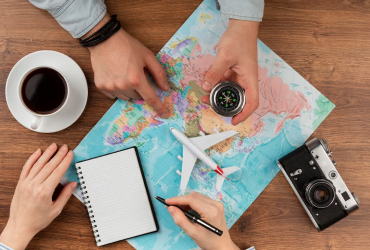
Get Special Offers From Rockjumper Birding
Sign up now and get the best deals straight in your inbox!
- Comments This field is for validation purposes and should be left unchanged.
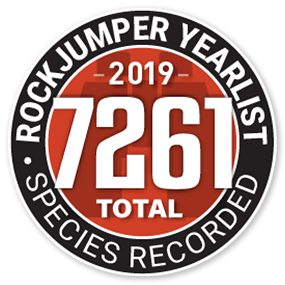
Modal title
Enquire about booking a tour.
- Tell us about your dream tour
- How many people do you expect to be on the tour? (optional)
- What are the date ranges you are looking at for this tour? (optional)
- How many days would you like the tour for? (optional)
- What is your price range for the tour? (optional)
- Email This field is for validation purposes and should be left unchanged.
Enquire about booking a tour 5
Your passport.
Add Attachment

Arrival Tour Information
Departure tour information.
Studying and Photographing Birds is my passion

I provide private customized birding trips primarily on the west side of Hawaii Island (Big Island). On a full-day outing we could see between 25 and 40+ species ranging from forest, grassland, urban, wetland, and coastal bird species. We may also be able to arrange a pelagic sea birding trip out of Kona with enough advanced notice.
I grew up on the island of Oahu in the town of Kaneohe. I have been birding for over 30 years. I am also very familiar leading birding trips to Maui, Oahu, and Kauai. Recently, I led week-long birding trips (Kauai and Hawaii Islands) for Road Scholars.
As a volunteer, I am the Hawaiian Islands Regional Editor for North American Birds journal publication (American Birding Association), Regional Editor for eBird’s Hawaiian Islands and U.S. Minor Outlying Islands, Editor of the 8th Edition of Hawaii’s Birds (Hawaii Audubon Society guide book).
Phone: 808-495-6545
Email: [email protected]
For More Information see Lance’s Website: https://www.hawaiibirdingguide.com
Kailua-Kona, Big Island, Hawaii (Offshore Waters)
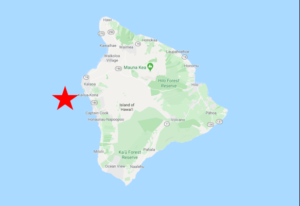
Hawaiian pelagic birdwatching remains a largely unexplored frontier, yet the productive waters just offshore from Kailua-Kona are within easy reach of any traveler, even those on a tight budget. The distance from the shore to deep ocean is minimal, and over twenty species of tubenoses are known to occur regularly: including at least five Pterodroma petrels and six shearwaters. This is among the most accessible areas that are consistent for several species, including “Hawaiian Storm-Petrel” and Black-winged , White-necked , Juan Fernández , and Bulwer’s Petrels . Other seabirds seen regularly include two species of tropicbird, three boobies, and South Polar Skua .
Orientation
Kailua-Kona is the principal settlement on the western coast of the Big Island. Offshore boat trips depart from the Honokohau Marina, which is between Kona International Airport and Kailua-Kona. The marina’s access road is along Highway 19 about 4.5 miles south of the airport, or 2.5 miles north of Kailua-Kona.
Birdfinding
Along the coast from Keahole Point to Kailua-Kona, the seabed slopes steeply to abyssal depths very close to shore, reaching several hundred meters depth between one and two miles off the beach. Pelagic birdwatching is therefore possible in almost any seaworthy craft—even a hand-paddled kayak.
Some members of the local birdwatching community have organized group trips on chartered boats from time to time (about two or three per year in the 2010s and ‘20s) to go many miles offshore. Participation in such trips is the best option, if possible, but solo excursions and fishing charters are also likely to yield interesting sightings.
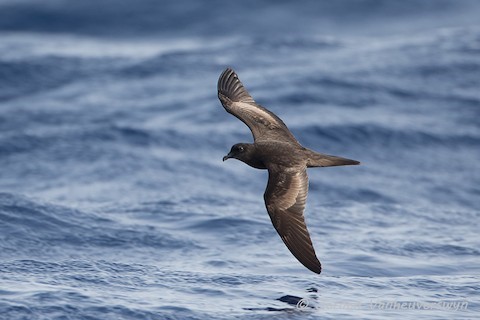
Bulwer’s Petrel is common in the offshore waters of Kailua-Kona. © Jeroen Vanheuverswyn
The offshore waters of the Kona Coast are largely unknown and could produce novel sightings at any time. Many of the seabirds of interest to North American birdwatchers are austral breeders, mostly absent from November to February—so most Kona pelagic trips are scheduled between March and October.
Both diversity and numbers presumably peak during the transitional seasons when many populations migrate between the hemispheres, roughly March-April and September-October. Many of the locally breeding seabirds also arrive around March and depart around October.

The following species are annual, or at least fairly regular, in Kona’s offshore waters:
Yellow-billed Tropicbird : fairly common year-round
Red-tailed Tropicbird : uncommon March-April
“Hawaiian Storm-Petrel” : fairly common March-October
Leach’s Storm-Petrel: fairly common March-April
Black-winged Petrel : fairly common September-October
Mottled Petrel : uncommon March-April and October
Juan Fernández Petrel : fairly common April and September-November
White-necked Petrel : uncommon March-October
Hawaiian Petrel : fairly common April-November
Bulwer’s Petrel : common April-October

Black-winged Petrel . © Hiroyuki & Shoko Tanoi
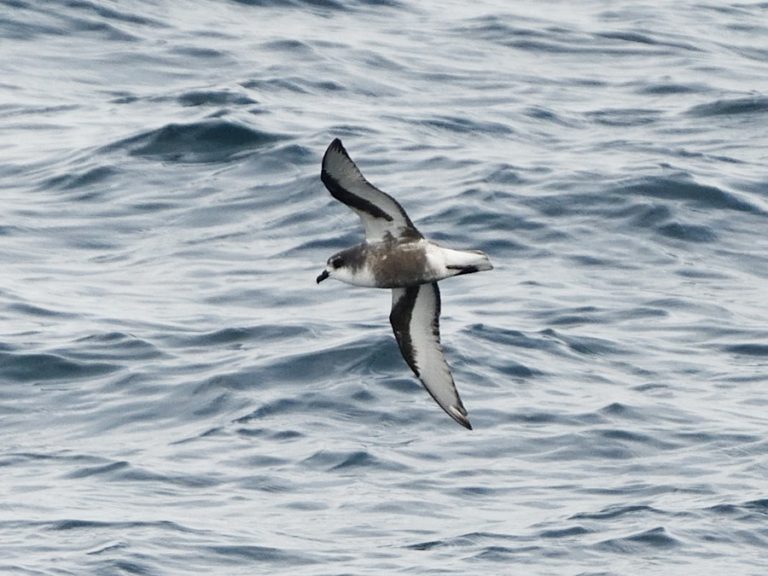
Mottled Petrel . © Hiroyuki & Shoko Tanoi

White-necked Petrel . © Hiroyuki & Shoko Tanoi
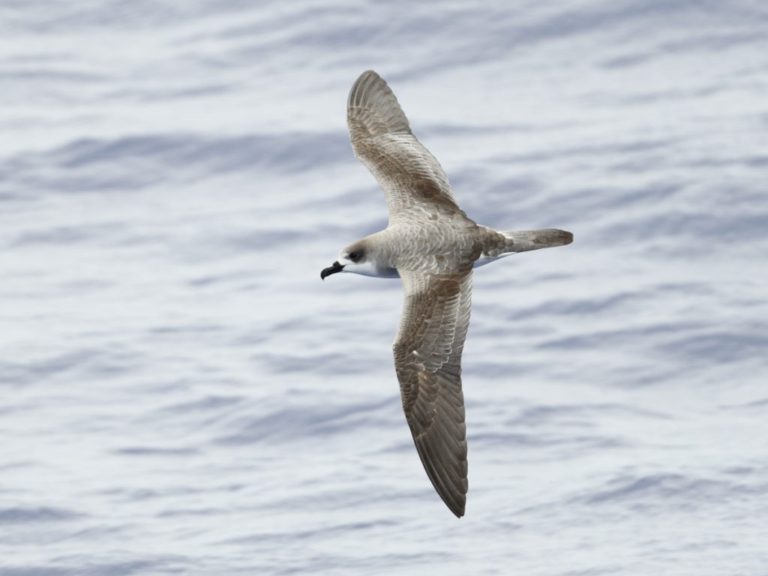
Juan Fernández Petrel . © Hiroyuki & Shoko Tanoi
Wedge-tailed Shearwater : very common March-November
Buller’s Shearwater : uncommon March-April and September-October
Sooty Shearwater : common March-April and September-October
Short-tailed Shearwater: rare October-December
Christmas Shearwater : fairly common June-July
Newell’s Shearwater : uncommon April-September
Great Frigatebird : fairly common March-September
Red-footed Booby : fairly common year-round
Brown Booby : fairly common year-round
Masked Booby : uncommon March-October
Red Phalarope : uncommon March-April
Pomarine Jaeger: uncommon April and October
South Polar Skua : uncommon August-October
Brown Noddy : uncommon year-round
“Hawaiian Noddy” : uncommon year-round
Common Fairy-Tern : fairly common April and October
Sooty Tern : fairly common April-November
Arctic Tern: uncommon in April
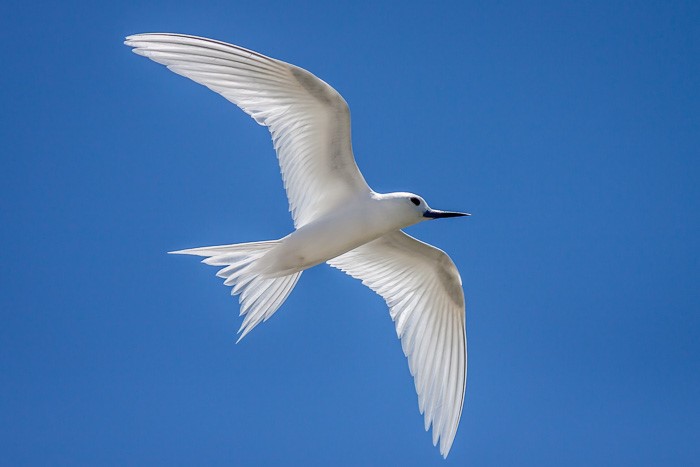
Common Fairy-Tern . © David Sargeant

Masked Booby . © Eric VanderWerf
The following have been seen infrequently in Kona’s offshore waters, but probably occur regularly:
Laysan Albatross
Black-footed Albatross
Cook’s Petrel
Stejneger’s Petrel
Kermadec Petrel
Murphy’s Petrel
Parasitic Jaeger

Kermadec Petrel . © Michael Daley
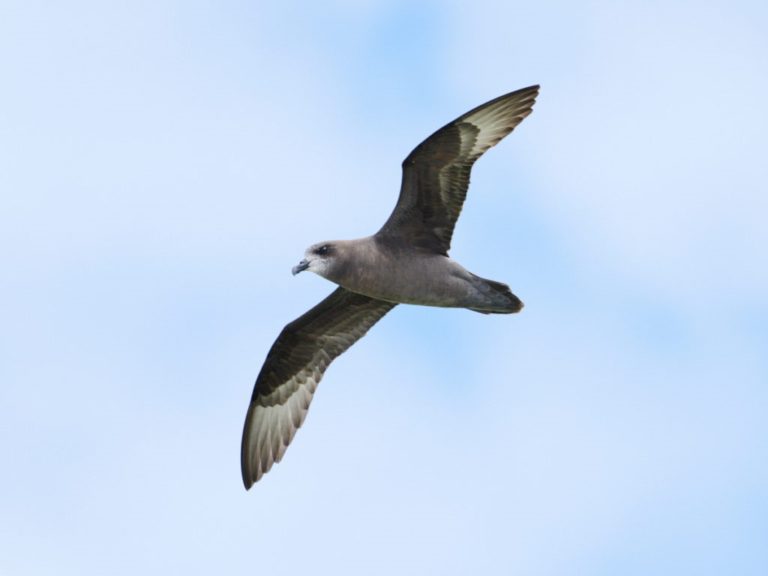
Murphy’s Petrel . © Hiroyuki & Shoko Tanoi
Species that have been recorded at least once, but might not occur regularly, include:
Tahiti Petrel : November 14, 2014
Jouanin’s Petrel: August 25, 1999; August 20, 2010
Accommodations
Kailua-Kona has a wide array of lodgings.
When to Visit
Local birdwatchers usually organize a few offshore trips each year, so it may be possible to plan a visit accordingly. The peak months for such outings are April and October, followed by March and September, followed by June, August, and November, but they might occur at any time of year.
You Might Also Like
Mahachai mangrove forest, thailand, king rama ix park, thailand, khao yai national park, thailand, wailoa river state park, hawaii, ke’anae, maui.
Hawaii Birding Tour
- Visit 3 Hawaiian islands - Oahu, Kaua'i and The Big Island of Hawai’i
- Many marvelous endemic songbirds in unique forested environments
- Picturesque and spectacular scenery, from smoking volcanic craters to huge waterfalls and scenic coastlines
- Spectacular views of seabirds from coastal viewpoints
- Visit National Wildlife Refuges, Waimea Canyon, the Alaka’i Swamp, Hawaii Volcanoes National Park and the incredible Kilauea Crater
Tour Overview
The Hawaiian Islands are quite simply enchanting! Spectacular scenery, mild climate and unique cultures are the backdrop for our Hawaii birding tour of the three islands Hawai’i, Kaua’i and O’ahu.
Known as the endangered species capital of the world, we search for the special endemics of each island, especially the bizarre honeycreepers with intriguing names like ‘I’iwi, ‘Amakihi, ‘Apapane and the amazing ‘Akiapola’au.
Laysan Albatross, Red-footed Booby and both White-tailed and Red-tailed Tropicbirds are marvellously close. Humpback Whales and Spinner Dolphins are just offshore in the incredible blue waters, Green Sea Turtles are along beaches, and the Kilauea Crater is just simply a must-see!
A superb tour to a special place!
Dates & Prices
Dates & prices.
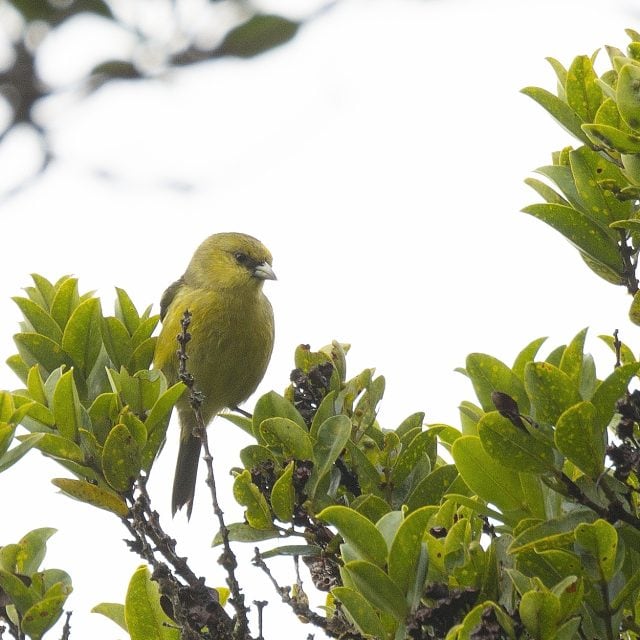
Day 1 - Arrival Oahu
Our Hawaii birding tour begins on Oahu, where we settle into Hawaiian life. Night in Waikiki.
Day 2 - Oahu
O’ahu is the hub of Hawaii, where most Hawaiians live and most tourists come to stay. Nevertheless, there are some excellent birding localities, and we visit some for specialties such as O’ahu ‘Amakihi and the endangered Oahu ‘Elepaio. We visit Kapi’olani Park where White Terns nest and introduced exotics such as Rose-ringed Parakeet, Common Waxbill, Yellow-fronted Canary and Red-whiskered and Red-vented Bulbuls forage. We drive along scenic coastlines, stopping to look for seabirds such as Brown Noddy and Masked Booby, to the James Campbell National Wildlife Refuge, where there should be a large and diverse gathering of waterfowl and shorebirds, including the range-restricted Bristle-thighed Curlew. Night in Waikiki.
Days 3 to 6 - Kaua'i
We take the mid-day flight to our next island, Kaua’i, where we spend the next four nights. Kaua’i is called the “garden island” because of its lush green vegetation, a product of its high annual rainfall. On average 460 inches of rain per year falls in the Alaka’i Swamp region of Kaua’i, making it one of the wettest places on earth. Because Kaua’i is fairly small, we visit much of the island, taking in Kilauea Point National Wildlife Refuge (the best place in Hawaii for seabirds), Hanalei National Wildlife Refuge for waterbirds, the Hanapepe area, and especially Waimea Canyon, Koke'e State Park and the famous Alaka’i Swamp for a chance at some of Kaua’i’s endemic songbirds.
Kaua’i is a wonderful island, and our days will be full of excellent birding and marvelous scenery. We should do well for seabirds. Our list should include Laysan Albatross, Wedge-tailed Shearwater, White-tailed and Red-tailed Tropicbirds, Great Frigatebird, and both Brown and Red-footed Boobies, often close enough for excellent photographs. Wetlands on the island hold populations of Ae’o or Hawaiian Stilt, Hawaiian Coot, Hawaiian Gallinule, and the endangered Koloa. Around the edge of ponds Japanese Bush-Warbler occur along with the gifted songster the White-rumped Shama. Nene are quite widespread here, and we should find quite a few during our stay.
In the Alaka’i Swamp we look for native forest birds. Some, such as ‘I'iwi and ‘Apapane, will be familiar to us, but others will be new. These include the Kaua’i ‘Amakihi, Kaua’i ‘Elepaio and the Anianiau - a small, yellow, warbler-like honeycreeper. We will also make an effort to track down the increasingly scarce ‘Akeke‘e, whose population has declined dramatically over the past decade. While exploring the forested trails of the Alaka’i Swamp there is always a chance, albeit remote, of finding a great rarity such as the ‘Akikiki or Puaiohi.
Days 7 to 11 - The Big Island of Hawai’i
We reluctantly leave Kaua’i and fly to our last island, The Big Island of Hawai’i, where we spend the first two nights near Volcanoes National Park. In the park we visit the spectacular Kilauea Crater, which has still active steam vents. In the early morning, the songs of the Omao, an endemic Hawaiian thrush, and the ‘Apapane, a crimson honeycreeper with white undertail coverts, should greet us. We spend time looking around the park, for Black (Hawaiian) Noddy along the black lava seacoast, Nene in the lava fields, Kalij Pheasant along easy and pleasant trails, Hwamei rustling about in the undergrowth, and possibly ‘Io just about anywhere cruising over the park. A must-see attraction is the Thurston Lava Tube, a remarkable geologic phenomenon. Here, Omao are more common than elsewhere, along with ‘Apapane and Hawai’i ‘Amakihi.
We transfer to our accommodations in Kona for the next three nights. We visit several localities around the Big Island searching for the many Hawaiian endemics that occur here. On one day we visit the superb Hakalau Forest National Wildlife Refuge, which preserves some of the finest Koa and Ohi’a Lehua forests remaining on the Big Island. Here there are still good populations of ‘I‘iwi, ‘Akepa, Hawai’i ‘Elepaio, Hawai’i ‘Amakihi and Hawai’i Creeper. We will also attempt to find the increasingly rare ‘Akiapola’au, a yellow-green honeycreeper that has one of the most amazing bills in the bird world. The bird feeds on insects hiding in trunks and branches; the lower mandible is used like a woodpecker’s bill - for chipping and chiselling into the wood until the insect larvae is exposed, and then the extraordinary upper mandible, which is long, thin and sickle-shaped, is used to extract the larvae. On another day, we visit Mauna Kea to look for the Palila, the last of the Big Island’s grosbeak honeycreepers that inhabits the Mamane-Naio forests on the upper slopes, as well as a pale subspecies of the highly variable Hawai’i ‘Elepaio.
Introduced species such as Eurasian Sky Lark, Saffron Finch and Red-billed Leiothrix occur here as well. In fact, we will encounter many introduced species during our stay on the islands; on the Big Island, we should encounter species as diverse as Yellow-billed Cardinal, African Silverbill, California Quail, Wild Turkey, Erckel’s and Black Francolin and Java Sparrow.
Day 12 - Departure, Kona
Our Hawaii birding tour concludes today in Kona. You can depart anytime today.
What's Included
Tour price includes.
- All accommodation
- Breakfasts and lunches
- Ground transportation
- 2 short, inter-island flights included
- 4 - 8 participants will be guided by one guide. 9 - 12 participants will be guided by two guides in two vehicles.
- All park, conservation and entrance fees
Tour Price Does Not Include
- Flights to and from start/end location
- Travel Insurance
- Evening meals
- Items of a personal nature
What to Expect
The Hawaii tour is relaxed and leisurely most days. We start some days early, especially on the Big Island, in order to reach our birding destination before the morning activity wanes. This tour is a marvelous experience, with endemic honeycreepers, superb seabirds, an amazingly diverse flora, breathtaking vistas, colorful marine life, and much more.
We generally have breakfast at the hotel or at a nearby restaurant/coffee shop before we head out for the day. Sometimes we will have optional pre-breakfast walks. We often take a picnic lunch in the field, but will occasionally stop at a restaurant for lunch. Dinner is usually at the lodge or a nearby restaurant. Each evening after dinner we compile the day's checklist, review the day's activities, birds, mammals and other observations, and plan the next day's activities.
Accommodation
Generally we stay in comfortable hotel rooms in locations close to where we want to go birding.
The walking on this tour is rated as moderate, we spend most of the time walking along fairly easy trails, but some terrain may be steep or slippery. We take these trickier trails at a slow and comfortable pace, but participants should be able to hike 5km (3 miles) up and down moderate grade slopes. Sturdy footwear with ankle support is recommended for some trails (particularly in Kaua’i at the Alaka’i Swamp); otherwise comfortable running shoes are fine for most other activities.
Most days have a small to moderate amount of driving. There will be two longer drives, but we make several stops along the way. Traffic can be an issue in Kauai, but we will try to avoid that where possible.
The weather is mostly pleasant, with an average low temperature of 20°C (68°F) and an average high temperature of 27°C (80.6°F), but there will be rain on some days, and on our visits to higher elevations we may encounter coolish and misty conditions. Clothing should be layered, and a light sweater and a waterproof jacket are highly recommended. And don’t forget a hat - Hawaii is tropical!
Featured Wildlife
Even though we cannot guarantee a sighting of the animals below, we feel quite confident that an encounter with the ones listed below is quite likely.
- Laysan Albatross
- White-tailed and Red-tailed Tropicbirds
- Red-footed Booby
- Great Frigatebird
- ‘Io (Hawaiian Hawk)
- Pacific Golden-Plover
- Ae’o (Hawaiian Stilt)
- Wandering Tattler
- Bristle-thighed Curlew
- Hawaiian Noddy
- Pueo (Short-eared Owl)
- O’ahu ‘Elepaio
- Several Hawaiian honeycreepers (Sub-family Drepanidinae) including: Palila, ‘Anianiau, Hawai’i ‘Akepa, ‘I‘iwi and the increasingly rare ‘Akiapola’au
- Humpback Whale
- Spinner Dolphin
- Green Sea Turtle
Past Tour Checklists
View the list of birds and other wildlife we encountered on our past tours.
- Hawaii birding tour species list 2023
- Hawaii birding tour species list 2022
- Hawaii birding tour species list 2019
- Hawaii birding tour species list 2018
- Hawaii birding tour species list 2017
- See More...
- Hawaii birding tour species list 2016
- Hawaii birding tour species list 2015
- Hawaii birding tour species list 2014
- Hawaii birding tour species list 2013
- Hawaii birding tour species list 2011
- Hawaii birding tour species list 2008
- Hawaii birding tour species list 2006
- Hawaii birding tour species list 2005
- Hawaii birding tour species list 2004
- Hawaii birding tour species list 2003
Trip Reports & Inspiration
Tour reviews, you might also like.

South Texas

Arizona in Winter
- Conservation
- In the media
- Birding blog
- How to book
- Booking FAQs
- Plan your trip
- Land Tour FAQs
- Insurance FAQ
WHERE WE GO
- Mexico & Central America
- South America
- Australia & New Zealand

- Terms of Use
- Privacy Policy
808-495-6545
Hawaii Bird Guide

Explore with Hawaii Bird Guide
Intersection of natural history, education, and citizen science.
If you’re looking to enhance your next trip to Hawaii (Big Island or Hawaii Island, Maui, Oahu, and Kauai) with an exciting and engaging birding and nature tour, consider a guided outing with Lance Tanino at Hawaii Bird Guide. He is a professional Naturalist, Conservationist, Eco Tour Guide with years of conservation, birding, and local experiences. If you are interested in learning new things about Hawaiian natural history (birds, plants, geology, biogeography), culture, good eats, etc., check out my active tours, look at pictures of my past ones, and feel free to get in touch with any questions.
I purchased a tour with Lance for two friends for their honeymoon. They raved about him. They are bird lovers and got to see 35 species! Lance was also helpful and prompt when I contacted him via email. He also has excellent credentials. Would totally recommend!
7 am - 5 pm day with Lance in early April 2016. There were four of us and it was an amazing experience. Lance know the shape, calls, and locations of Hawaiian birds, and what a day, fantastic endemics: Amakihi, Apapane, Oma'o, Hawaiian Owl and I'iwi. Plus lots of special encounters with introductions: Red Avadavant, Kalij Pheasant, Java Sparrow, Sand Grouse, White-faced Ibis, African Silverbill...Lance was so easy to work with via email to set up time and place to meet, then driving his car so we could all be together, he knows birds, biogeography, and gave us tons of info to guide the rest of our stay. Cannot say enough positive, this was a super day!
I had the privilege of participating in a week long guided birding adventure in Hawaii (Big Island and Kauai) with Lance Tanino. He is a stellar group leader and birding is clearly his passion. He is knowledgeable about both the native and introduced birds of Hawaii. Lance recognized these birds by call and sight. He also knew the best locations to find them. In addition to his birding expertise, Lance demonstrated a comprehensive knowledge of the flora and fauna of the region. By the end of the trip, I knew to look for Apapane and Iiwi in the flowers of Ohia trees and had a greater appreciation for the evolution of endemic bird species, trees and animals in the Hawaiian Islands.
4 of us, all interested but not professional - level birders, spent a day with Lance. We wanted to see what we could, yet be back at our cars by 3 PM. This gives you an idea of our level! Lance was easy and informative, giving us history and birding knowledge during the day's tour. He is patient, always a plus for the causal birder, and he wisely kept us on the dry side of the island, making out birding adventure much more enjoyable. I would go on another day with him in a heartbeat!
Lance Tanino was born and raised in Kane’ohe on O’ahu. His interest in birds started at age 10. The Cattle Egret, an introduced species caught his attention and curiosity for birds. Since those early years, he continued his interests with degrees in Zoology (BA) and Environmental Studies With Concentration in Conservation Biology (MSc). Lance serves as the Hawaiian Islands Regional Editor for North American Birds by American Birding Association, Regional Editor (Hawaiian Islands and U.S. Minor Outlying Islands) for eBird (Cornell's Lab of Ornithology), Member of Western Field Ornithologists' Hawaii Bird Records Committee. His favorite ways to go birding are seawatching, hawkwatching, and birding with friends.
Lance has been involved in conservation and natural resources for the past 22 years in Hawaii, Maine, Micronesia, New Hampshire, and Vermont. Along the way, my passion for birding has taken me to Japan, Costa Rica, Belize, Mexico, and Canada.
He taught high school Ecology, Environmental Studies, and Biology at college-prep/dormitory high schools in southeastern Pennsylvania and southern Vermont.
As a professional Eco Tour Guide, Lance excels at helping you plan your perfect outing. Not just any outing, but truly exceptional trips filled with inspiring and enriching experiences. He believes in sharing his knowledge and passion for birding, conservation, education, and Hawaiian natural history with all of those he guides. Explore his site to find out more.
Professional Naturalist
Unforgettable Experiences
Tour Options
From high elevation grasslands to native rainforests to wetlands to the coast, there are a variety of habitats to explore for anyone who wants to learn and experience the natural history of the Hawaiian Islands. Read on to discover the alternative tour options available at Hawaii Bird Guide. Choose from private/small group outings to West Hawaii, Hakalau Forest, or customized nature tours. Get in touch today with any questions or concerns.
All-day in West Hawaii
We will focus on seeing a wide variety of established bird species from specific roadside locations and a few of them may include short walks. The route (8-10 hours and 150+ miles) includes scenic views of the island and sharing my knowledge of Hawaiian natural history, geology, biogeography, etc. The trip starts at 7:30 AM in Waimea.
Email me at [email protected] for more details.

Half-day/Hourly in West Hawaii

Hakalau Forest National Wildlife Refuge
Join me at Hakalau Forest National Wildlife Refuge where we will focus on the unique natural history of this area. There is no finer example of native montane wet forest in the archipelago. This is an incredible opportunity for those interested in birds, plants, insects, photography, and being completely surrounded by nature. Access to this location is very restricted. 11 native bird species can be seen: Hawaiian Goose or Nene (endemic and endangered), Hawaiian Hawk or 'Io (island endemic and endangered), Short-eared Owl or Pueo (endemic subspecies), Hawai'i 'Elepaio (island endemic), 'Omao (island endemic), 'Apapane (endemic), 'I'iwi (endemic), 'Akiapola'au (island endemic and endangered), Hawai'i 'Amakihi (island endemic), Hawai'i Creeper (island endemic and endangered), and Hawai'i 'Akepa (island endemic and endangered).

Group Pelagic Tour
Pelagic wildlife (seabirds and marine mammals) boat trips are available for groups out of Honokohau Marina, Kailua-Kona.

Maui, O'ahu, and Kaua'i outings
Please email [email protected] for more details for a customized outing.

"Be happy for this moment. This moment is your life"
Omar Khayyam
Thanks for submitting!

Sunrise bird walk
Subscribe Form
Stay up to date
- Things to Do
- Restaurants
- Vacation Rentals
- Travel Stories
- Rental Cars
- Add a Place
- Travel Forum
- Travelers' Choice
- Help Center
Pelagic Birding in Paradise - Hawaii Bird Tours
- United States
- Hawaii (HI)
- Oahu
- Oahu - Things to Do
- Hawaii Bird Tours
WOW!!! SHAZAM!!! What a wonderful way to spend a day in Hawaii. Tour was an amazing experience... read more
Hawaii Bird Tours exceeded all expectations, 11 out of 10. Pippa was amazing, very knowledgeable... read more
Pelagic Birding in Paradise
I have birded regularly with Mandy, and she is top-notch. Excellent birder, very personable, and thorough in her preparation. Everything is fully compliant with all permits, insurance and trip details. The pelagic trips from Kona, when combined with some forest birding for the endemic passerines, will build your list and show you the real magic of these islands. Mandy is the Best!
I had the great pleasure and fortune of booking a private trip with Mandy to the Big Island while I was staying on Oahu. We spend nearly three full days out searching for birds and I didn't leave unsatisfied! Mandy is an exceptional guide, with a keen ear and knowledge of where the best place is to find target species. She is also a blast to hang out with--great sense of humor and lots of energy. She catered to my pace and target species, and I had the perfect birding adventure!
Three of us were fortunate enough to spend half a day with Mandy getting to know the birds of Oahu and the history of the island. Mandy is personable, engaging, and very attentive to our birding level and tour goals. The birds were cooperative and the places that Mandy took us to to optimize the experience were beautiful. As an added bonus, she gave us amazing restaurant recommendations!
I joined a small group of birders on an 11-day visit to the Hawaiian Islands, led by Mandy Talpas, to search for endemics. We visited Oahu, Kauai and Big Island. We found almost everything we were looking for (does one ever see everything?) and had a great time. Mandy is an excellent birder with a keen ear and a very good knowledge of where to find the birds. She is also a cheerful and energetic young woman and our group had a lot of fun with her as our leader. The hotels she chose, while economical, were clean and air conditioned, and the beds were very comfortable. The vehicle(s) we used were spacious and air conditioned. In all we saw 16 endemics, a number of winter specialties and vagrants (like Bristle-thighed Curlew and Grey-tailed Tattler), and a host of other interesting birds. I do not hesitate to recommend Mandy to anyone seeking a serious birding adventure in Hawaii.
Mandy and her business are wonderful, and she set everything up for me to bird with Matt on Oahu while I was in town for a conference for work. We birded the whole island, changing from forest birds to sea birds. It was a great tour and really nice to get out of the city. Matt was knowledgeable, accommodating, and friendly. He even submitted the eBird checklists for our stops to make it much easier on me. I was able to see plenty of species too! Highly recommend!

I had a wonderful day watching birds around Oahu with Mandy. Watching endemic birds such as Oahu Elepaio and Oahu Amakihi in the local forest and Bristle-thighted Curlew at local golf course was marverous experience to me. Around North shore, I also enjoyed seeing Hawaiian Monk Seal and Green Sea Turtle. She also took me to the good place/street for watching the chicks of White Tern in Honolulu, where I re-visited by myself later for taking many photos of them and adult terns. マンディーと1日オアフ島を回りました。オアフ・アマキヒやハワイヒタキを見たり、日本では珍しいハリモモチュウシャクシギなどを観察して1日楽しみました。ノース・ショア近辺ではアザラシやアオウミガメも見ることができました。元観光ガイドであり、地元野鳥、自然の知見が豊富な彼女はすばらしいガイドで、とても楽しい経験でした(日本語は話しません)。


Birding on Kauai: The Ultimate Guide to the Best Bird Watching Spots (2023)
by Bryan Murphy | Nov 1, 2023
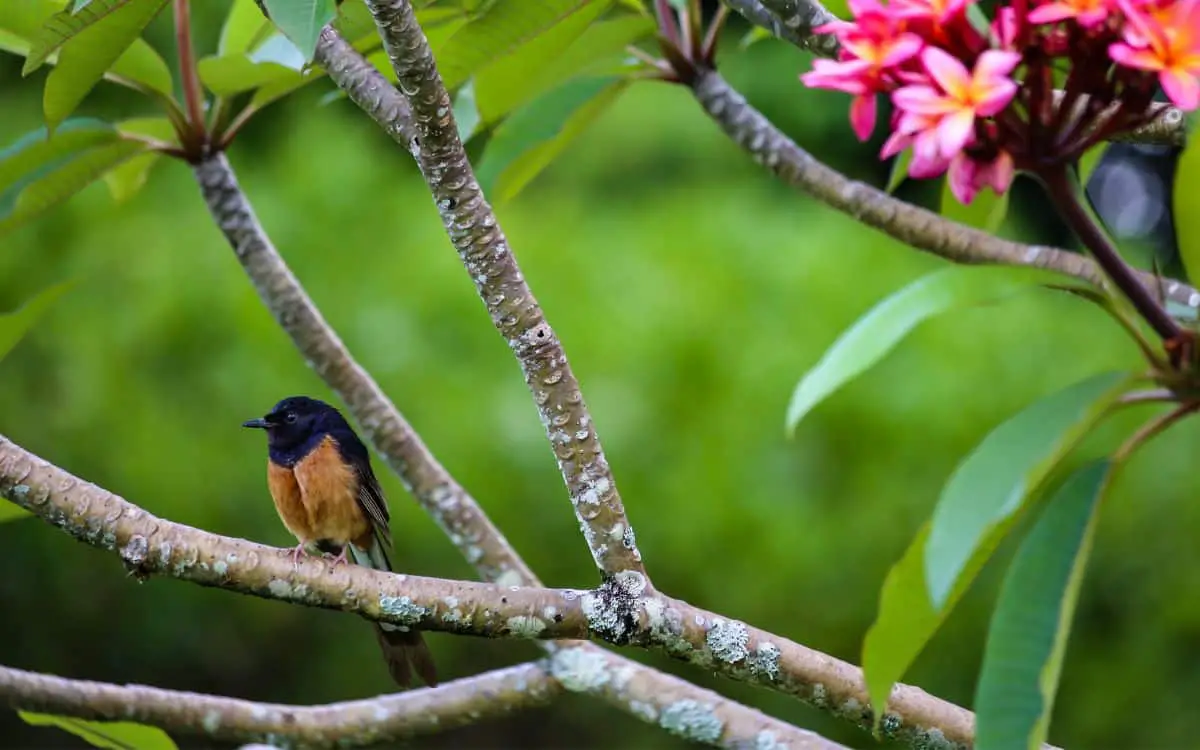
Birding on Kauai island of Kauai can be an exciting yet overwhelming endeavor with its rich variety of avian species. Known as a birdwatcher’s paradise, Kauai is home to numerous endemic birds that are unique to this Hawaiian Island.
Planning a trip to Hawaii? Have any questions? Join our Hawaii’s Best Travel Facebook group here now! It’s the perfect place to ask any questions and to be inspired!
This Birding on Kauai post is written by Bryan Murphy , an expert in Hawaii travel and a top-rated podcast host. The post may contain affiliate links, meaning I may earn a small commission that goes back into maintaining this site if you use the provided links.
Information Disclaimer: This website gives general info and isn’t legal or official advice. It helps travelers with tips but can’t replace personal abilities, fitness, experience, or local knowledge, which you are fully liable for. All activities have risks; assess current conditions and follow local laws and signage.
Planning Your Trip? Use Our Favorite Resources!
🏨 Accommodations: We recommend Expedia
✈️ Flights: For the cheapest flights, we use Skyscanner
🚗 Rental Car: We recommend Discount Hawaii Car Rental
🌋 Hawaii Tours & Attractions: We recommend Get Your Guide
📱 Mobile Tour App: Our favorite is Shaka Guide
This guide aims to provide you with the best birding spots and useful tips for an optimal birding experience in this tropical haven. Ready to uncover what makes Kauai a fantastic choice for your next birding adventure?
Key Takeaways of Birding on Kauai
- Kauai is a paradise for bird-watching with its unique endemic species that can’t be found anywhere else in the world.
- The island offers diverse habitats such as open country, marine areas, forests, urban landscapes, and wetlands, where you can spot different types of birds.
- Top bird-watching spots on Kauai include Kōke’e State Park, Kīlauea National Wildlife Refuge, and Wailua River Valley.
- Hiring a professional bird guide like Birdingpal or Hawaii Bird Tours can enhance your experience and help you spot rare and unique Hawaiian species.
Why Birding on Kauai, Hawaii?
Kauai is a dream spot for bird watchers. It’s home to many birds you can’t find anywhere else. These birds are called “endemic.” This means Kauai is the only place in the world where these birds live.
So, birding on Kauai lets you see some one-of-a-kind wildlife .
From pro bird watchers to folks who just enjoy nature, everyone loves birding on Kauai. You don’t need to be an expert – anyone can have fun spotting Kauai’s unique and colorful birds .
Plus, there’s more than just seeing new kinds of birds here! Birding lets you take in all the beauty Kauai has to offer, like lush forest sights and stunning ocean views.
You’ll also find many different kinds of bird tours. Take a tour with Birdingpal if you want someone who knows lots about birds to show you around.
A guide can help make your trip even better by showing where to look for certain types of rare or unique island-only (or endemic!) Hawaiian species.
Birds of Kauai: Variety of Bird Species on Kauai
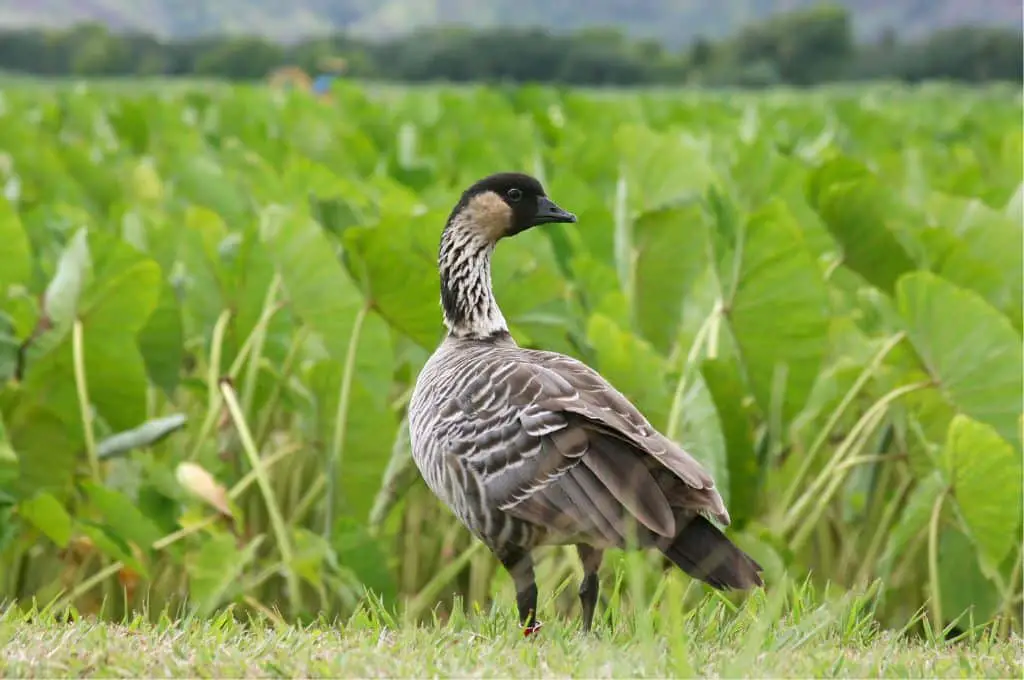
Kauai is home to a diverse range of bird species, including open country birds, marine birds, forest birds, urban birds, and wetland birds.
Open Country Birds
You will find Open Country Birds in Kauai. Koke’e State Park is a great place to see them. You can also go to Kīlauea National Wildlife Refuge for the same experience.
Wailua River Valley, too, has many Open Country Bird species.
Try taking a birding tour to help find these birds. Birdingpal and Hawaii Bird Tours are two good choices. They take you on fun trips and show you all kinds of Open Country Birds in Kauai!
- Endemics: The Nene, or Hawaiian Goose, and the ‘Io, or Hawaiian Hawk
- Forest and open land birds: The O’ahu ‘elepaio, Kaua’i ‘elepaio, Hawai’i ‘elepaio, Hawai’i ‘amakihi, Kaua’i ‘amakihi, O’ahu ‘amakihi, Anianiau, and Akekee
- Wetland birds: The Hawaiian coot, also known as ʻalae keʻokeʻo
- Seabirds: The Hawaiian Petrel (Uaʻu)
Marine Birds
In Kauai, you can see many types of marine birds. The Kīlauea National Wildlife Refuge is a top place to spot them.
Here, birds like Red-footed boobies and Laysan albatross fly in from the sea.
You can also find these seabirds on tours with Hawaii Bird Tours or BirdingPal. They offer trips that take you close to the ocean where these birds live.
You may even see some at Wailua River Valley! This spot is excellent for bird watching, too.
Forest Birds
In Kauai, the forest is full of birds. You can see them in places like Koke’e State Park and Wailua River Valley. Two types you might spot are ‘Apapane and Kaua’i akepa.
These birds only live here, nowhere else on Earth! Plus, there are birding tours.
They will take you to spots where these birds love to hang out in the rainforest. Going on a tour is fun and helps keep nature safe for all!
So come see our forest birds in their home right here on Kauai island.
Urban Birds
In addition to the diverse range of bird species found in Kauai’s open country, marine areas, forests, and wetlands, the island is also home to various urban birds.
These birds can be spotted throughout the island’s towns, often near residential areas and parks.
Common urban bird species include the Zebra Dove, Java Sparrow, Red-crested Cardinal, and Japanese White-eye.
You might even catch sight of some introduced bird species like Myna Birds or Common Waxbills.
So watch for these feathered friends as you explore Kauai’s urban landscapes!
Wetland Birds
Kauai has a variety of bird species, and among them are the wetland birds. These birds can be found in the Wailua River Valley, which is a popular spot for observing them.
If you want to have a better chance of seeing these beautiful creatures, it is recommended to hire a bird guide who knows where to find them.
Don’t forget to bring your binoculars , field guide , and birding vest to comfortably observe the wetland birds from afar. The best time to see them is early morning, right after sunrise .
So make sure to set your alarm clock and get ready for an amazing bird-watching experience on Kauai!
Top Bird-Watching Spots on Kauai Island
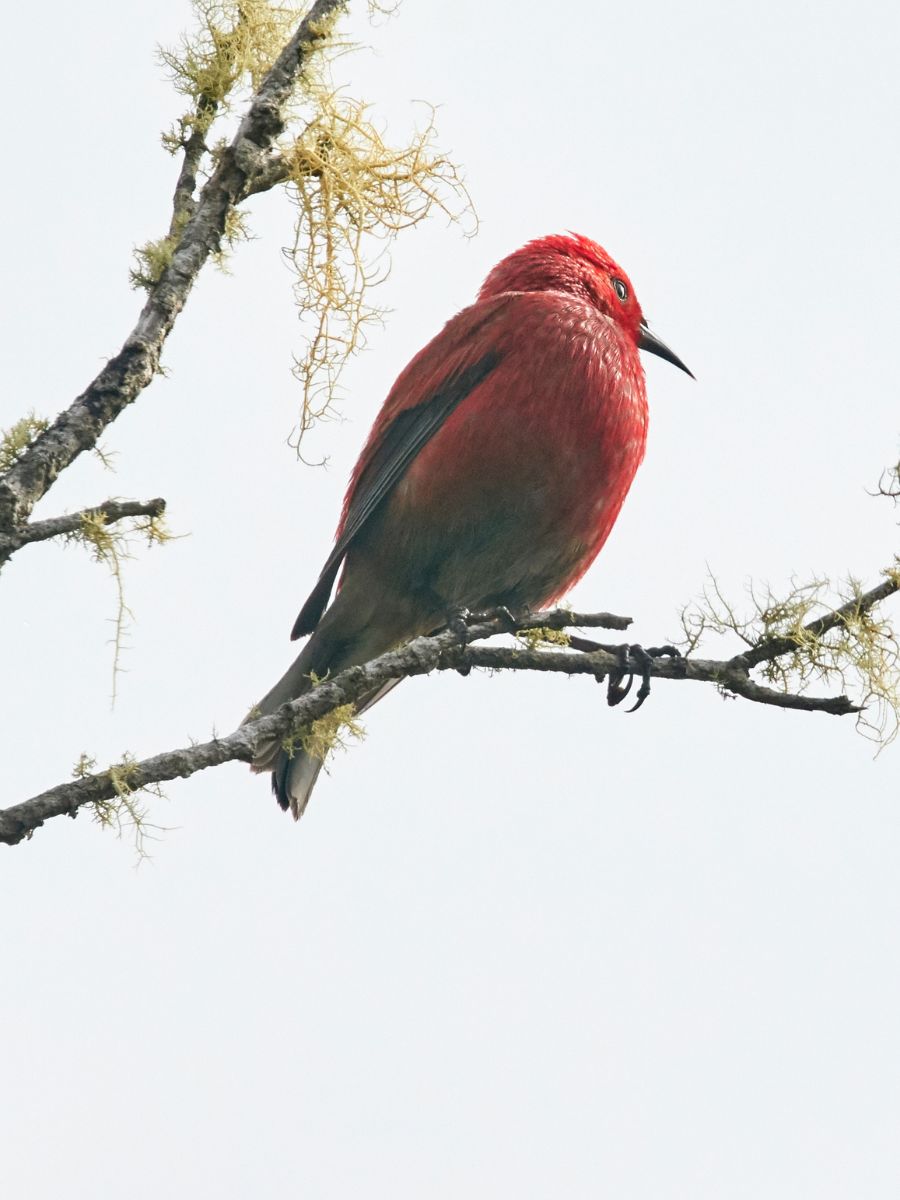
Explore the beauty of Kōkeʻe State Park, Kīlauea National Wildlife Refuge, and Wailua River Valley for incredible bird-watching opportunities in Kauai.
Kōkeʻe State Park
Kōkeʻe State Park is a must-visit spot for bird-watching in Kauai. With its beautiful trails, you can see some incredible birds like the ‘Apapane and Kaua’i akepa .
Right next to the park is the Alakai Wilderness, where you can find even more unique bird species. The Pihea and Alakai Swamp trails in Kokee are especially great for observing native forest birds like the ‘I’iwi.
So don’t forget to bring your binoculars and explore these amazing birding spots at Kōkeʻe State Park !
Kīlauea National Wildlife Refuge
Kīlauea National Wildlife Refuge is a must-visit spot for bird-watching in Kauai . This refuge offers the chance to see a wide variety of birds , from regular residents to migratory seabirds like Red-footed Boobies and Laysan Albatross .
You can expect an exciting and diverse birding experience here. Just keep in mind that the tour involves standing, short walks on uneven and wet terrain, frequent stops, and getting in and out of the tour van.
So be sure to wear lightweight long pants and waterproof hiking shoes, and bring a lightweight sweater or fleece for added comfort.
Wailua River Valley
The Wailua River Valley is a must-visit spot for bird watchers in Kauai. This beautiful valley is known for its diverse bird species and stunning scenery.
You can spot birds such as the Kōloa, which is a Hawaiian duck, and the ‘Alae ke’oke’o, also known as the Hawaiian coot.
Take your binoculars and explore this paradise of unique feathered creatures while enjoying the beauty of nature at its finest.
Recommended Birding Tours on Kauai in 2023
If you’re looking for a guided bird-watching experience on Kauai, be sure to check out Birdingpal, Hawaii Bird Tours, and Kauai North Shore Customized Birding Tours .
These tours will take you to some of the best bird-watching spots on the island and provide knowledgeable guides to enhance your birding adventure.
Don’t miss out on these incredible opportunities to see Kauai’s amazing avian wildlife up close!
Are you interested in bird watching on Kauai? If so, Birdingpal offers recommended birding tours that will help you explore the best bird watching spots on the island.
Their tours are led by a knowledgeable guide , Mandy Talpas, who will ensure that you have a great time while learning about Hawaii’s unique flora and fauna.
These tours involve activities like standing, short walks on uneven and wet terrain, frequent stops, and getting in and out of the tour van. If you decide to go on a group trip with Birdingpal, make sure to cancel at least 48 hours in advance for a full refund.
For private tours, you have up to 7 days to cancel outside of which you can get a full refund. So get ready for an exciting bird-watching adventure with Birdingpal!
Hawaii Bird Tours
Hawaii Bird Tours is a highly recommended option for birding tours on Kauai. Led by experienced guide Mandy Talpas, these tours offer customized excursions where you can learn about the unique flora and fauna of Hawaii while having a great time.
The tours involve short walks on uneven terrain , frequent stops, and getting in and out of the tour van. It’s important to wear lightweight long pants, waterproof hiking shoes, and bring rain gear for your comfort.
Don’t forget to bring your camera, binoculars, sun protection, layered clothing, daypack for lunch and water as well. With Hawaii Bird Tours, you’ll have an unforgettable bird-watching experience on Kauai!
Kauai North Shore Customized Birding Tours
If you’re looking for a personalized birdwatching experience on Kauai, then Kauai North Shore Customized Birding Tours is the perfect option for you. These tours cater to birdwatching enthusiasts and offer private tour options .
The website is currently being updated, but you can find information about their tours categorized by island, including Kauai. They provide pelagic tours and multiple island tours as well.
You’ll also find different styles of tours to choose from, such as multi-day trips, day trips, and custom tours. So if you want a unique and tailored birdwatching adventure on Kauai, check out Kauai North Shore Customized Birding Tours.
Tips for First-Time Bird Watchers in Kauai
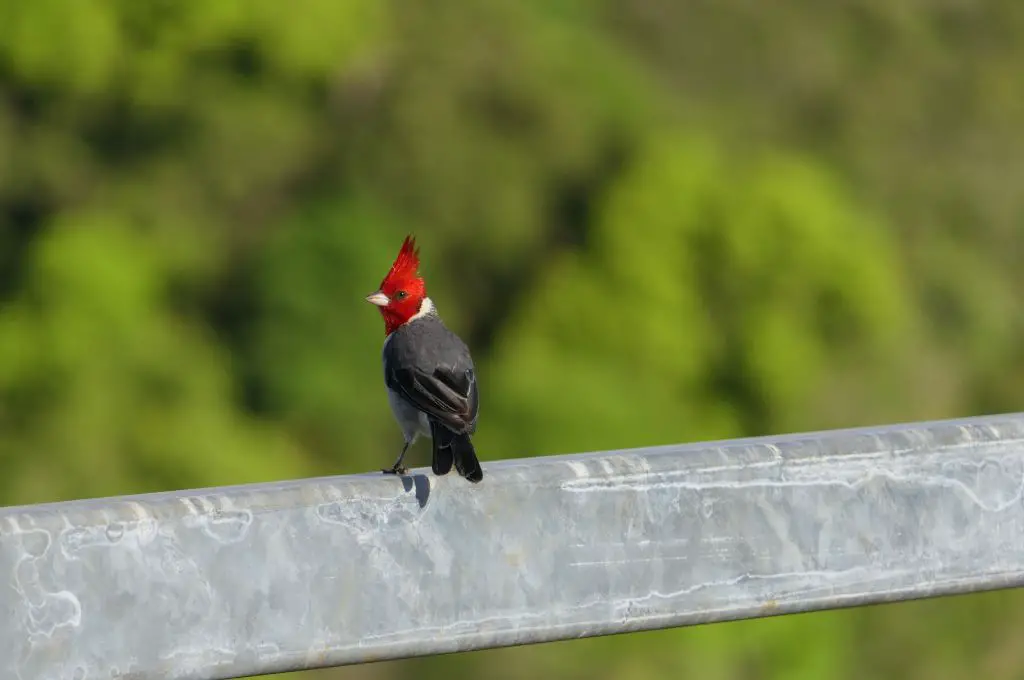
If you’re new to bird watching on Kauai, here are some tips to help you get started. First, make sure you bring the right gear. A good pair of binoculars is essential for getting a closer look at the birds.
You might also want to consider investing in a field guide or downloading a birding app to help with identification.
Next, be sure to dress appropriately for your birding adventure. Wear comfortable shoes as you may be walking on uneven terrain. A hat with a wide brim can protect you from the sun, and don’t forget sunscreen !
When it comes to finding birds, it’s helpful to hire a professional bird guide . They know the best spots and can point out different species that you might not have noticed otherwise.
Plus, they can provide valuable information about the behavior and habitat of each bird.
Lastly, be patient and observant during your bird-watching experience. Birds are often more active in the early morning or late afternoon, so plan your outings accordingly.
Take your time and enjoy being in nature – you never know what unique species you might encounter on Kauai!
Looking for more fun things to do on Kauai? Check out this guide here !
FAQs of Birding on Kauai
1. what is birding on kauai.
Birding on Kauai means watching many types of birds found only in Hawaii. The island has forests, lowlands, and parks full of different species.
2. Where are the best places for bird watching on Kauai?
The best spots for bird watching are at state parks like Kokee State Park, trails near Poipu, and wildlife refuges such as Hanalei National Wildlife Refuge or Kilauea Point National Wildlife Refuge.
3. What kind of birds can I see in Kauai?
You can spot endemic birds like Hawaiian coot, Elepaio, Anianiau or even endangered species like ‘I’iwi and Akikiki! Also expect to see introduced birds that came from another part of the world.
4. Do we need a guide for birding tours on this island?
Having a guide is often useful because they know where specific species live and how to identify them. Plus they understand local rules about protecting animal homes!
5. Can I also spot seabirds when I am touring around the island?
Yes! You could have a perfect view seabirds such as tropicbirds or red-footed boobies along with Hawaii’s ocean life during pelagic birding adventure boat trips.
6. What are some of the common terms associated with birds of Hawaii?
Some common terms associated with birds of Hawaii include “birds of Hawaii,” “Hawaii birding,” “Kauai amakihi,” “Kauai elepaio,” “Hawaiian goose,” and “apapane.”
7. Can I expect to see waterbirds while birding on Kauai?
Yes, there are waterbirds you may be able to see while birding on Kauai, such as the black-necked stilt and the gallinule.
8. Are there any specific birds mentioned that are natural to Kauai?
Yes, there are several bird species mentioned in this guide that are natural to Kauai, such as the Kauai amakihi, Kauai elepaio, and the apapane.
Bird Watching on Kauai Wrap-Up
Birding on Kauai is an exciting adventure for bird enthusiasts. With its diverse habitats and endemic species, the island offers incredible opportunities for bird watching.
From Koke’e State Park to the Wailua River Valley, there are plenty of top spots to see a wide variety of birds.
Whether you’re a beginner or an experienced birder, hiring a professional guide can enhance your experience and help you spot rare birds. So grab your binoculars and get ready for an unforgettable birding experience on Kauai !
RELATED POSTS

- Best Time to Visit Maui, Hawaii: Your Guide for When to Travel to Maui (2024)
[dssb_sharing_buttons icon_placement="icon" columns="2" _builder_version="4.24.2" _module_preset="default" box_shadow_style_icon="preset1"...
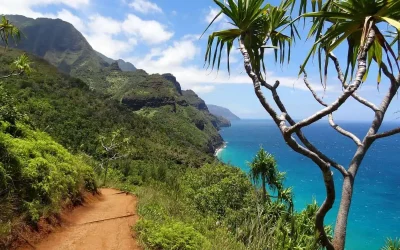
- Best Time to Visit Kauai, Hawaii: Your Ultimate Guide to the Perfect Kauai Vacation (2024)
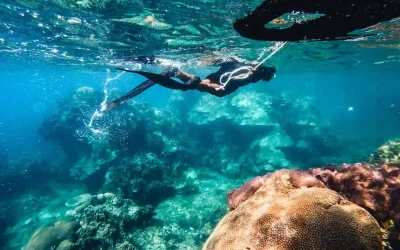
- 8 Best Snorkel Spots on Kauai: Dive into the Best Beaches and Underwater Wonders
More Hawaii's Best on...

Aloha, we're Bryan Murphy and Ali Murphy, a family of five that loves exploring Hawaii. Through Hawaii's Best, we share our top places to visit, stay, and responsible travel. Learn Hawaiian culture and how to support local. With years of experience, we're known experts in responsible Hawaii travel. Listen to our top-rated podcast, " Hawaii’s Best Travel ," and join our free online community of Hawaii lovers. Learn More ->

Recent Posts
- Episode 119: Turo Hawaii: Transforming Hawaii Travel with Local Insights
- Molokini Crater Snorkeling: Review of Molokini Snorkel Tours on Maui

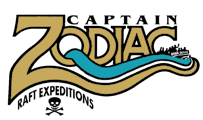
- Possible Late season Humpback whale sightings!
Pelagic Wildlife Excursion
Quick Details
- Hour Glass Duration: 4-5 hours
- Users Ages: Ages 7+
- Clock Check-In Time: 15 Min. Prior to Departure
Boarding Location: Captain Zodiac
Big Island Wildlife Excursion
Whale season is never over for Captain Zodiac. Join us for a unique experience of a lifetime where we venture into the unknown! Enjoy a morning wildlife watching tour with our experienced Naturalist captains and crew, who share a passion & respect for the ocean and its inhabitants.
Kona is one of the few unique coastlines in the world with numerous species of wildlife year-round. We have the opportunity to encounter 17 different resident whale & dolphin species, turtles, sharks, Hawaiian Monk seals, various species of birds and much more. Experience our military grade Zodiac Hurricanes – the same boats used by Navy seals as we explore the diverse habitat provided by Hawaii’s deep underwater geography, an ocean safari for the true adventure seeker!
We highly encourage our guests to bring cameras along not only for your own photographic experience but the opportunity to become a valuable contributor to citizen science along with Captain Zodiac.
This excursion may include an off-the-beaten path snorkeling location so we highly recommend wearing swimsuits in case the opportunity arises to jump in the water. As this is a marine wildlife watching tour, we cannot guarantee encounters, however with the abundance of year round ocean residents, the chance of no sighting is low.
There is a minimum of 6 passengers, if the minimum is not met on a specific day, we will move your reservation to another date. In the unlikely event that we are unable to run a trip due to weather conditions, minimum not met and inability to re-schedule, you will be fully refunded.
Our rafts can hold up to 16 passengers. We are able to accommodate larger groups as we have multiple rafts! Just give us a call to organize.
Related Excursions
- Users Ages 4+
- Hour Glass 3 hours
Whale Watching Tour • Seasonal
Experience the majesty of nature on a three-hour whale watching tour on the west end of the Big Island! Use the hydrophone and hear the whale songs.
- Most Popular
- Hour Glass 5 hours
Kona Snorkeling – Beat the Crowd Tour
Beat the crowd and enjoy more time snorkeling at the Kealakekua Bay, one of Hawaii’s premier snorkel spots with incredible visibility and calm conditions, on this five-hour tour! This is the longer tour compared to our original Kealakekua Bay Snorkeling Tour.
Hawaii Bird Tours uses cookies to give you the best possible service. If you continue browsing, you agree to our use of cookies. More details can be found in our terms and conditions .
- [email protected]
- +1 808-373-6364
- Open Facebook account in a new tab.
- Open Instagram account in a new tab.
- Open Tripadvisor account in a new tab.
Oahu Birding Tours
Endemic Forest Birds
Majestic Seabirds
Stunning Scenery
Discover Oahu's Beautiful Birdlife & Breathtaking Landscapes
Explore the natural beauty of Oahu with expert guides where we offer unrivaled birdwatching experiences on the island. Our Oahu Endemic Birding Adventure (opens in a new tab) invites you on a gentle hike through the lush valleys where we spot colorful endemic forest birds in their natural habitat and appreciate the glorious scenery. For a more comprehensive experience, the Ultimate Oahu Birding Experience (opens in a new tab) takes you beyond the forests and parks to enjoy the best of Oahu’s birding, from the vibrant rainforests to the rugged southeastern coastline where you’ll find a diverse range of species and embrace the full spectrum of Oahu’s natural beauty as we go where most other tour operators don’t – away from the crowds on popular day tours!
If neither of these tours offer quite what you are looking for, be sure to check out our Custom Tours (opens in a new tab) and craft your ideal Oahu birding tour.
Oahu Endemic Birding Adventure
Ultimate oahu birding experience, custom tours, read why people love us, tripadvisor reviews.
Mandy’s Birding Tour does what it sets out to do and more with Mandy’s great preparation and organization. She is an excellent birder, personally active in the islands’ conservation and related all kinds of information about the birds and the vegetation connected with them as the day progressed. Actually Mandy gave us a terrific tour of every aspect of the island. She has a great personality and is easy to be with and easily takes care of every person. We loved the tour. We love Mandy. It was one of our best days in Oahu.
NottawaChelle
Birding with Mandy was a highlight of our Oahu holday. She is so much more than just a “list it and go” guide but rather is a passionate and vivacious ornithologist who cares greatly for those on her tour. During our day with her, Mandy made sure that each stop was comfortable for those participating and that we had the unhurried time to spot and enjoy the activities of the birds we saw. No one felt rushed but also we didn’t dawdle along. In this one day excursion we experienced forest, wetland, ocean, rural, and urban birding each with its own unique inhabitants.
Kristin Schrenk Schmitt
Facebook reviews.
Mandy is fantastic. My husband Mark and I spent a day with her in Oahu and could not have been happier. She knows so much about birds, conservation, Hawaii in general. And such a nice, fun person. We saw the endangered Oahu Elepaio, Oahu Amakihi, Bristle-thighed Curlew and many close-up Laysan Albatross. 24 life birds! I cannot recommend her enough and would love to come back to bird with her again on Kauai and the Big Island.
Michelle Houghton
Google reviews.
What a wonderful introduction to endemic and introduced bird species on Oahu! Mandy is an amazing source of island knowledge on birds, ecosystems, flora, and conservation. She is engaging and caring as she tries to create the best experience for each person on her tour by building the day around what birds each participant is hoping to see. Throughout our wonderful day travelling in Mandy’s comfortable van, we made our way to eight different birding locations: urban, rural, mountainous, forest, wetland, and ocean. Each stop was unhurried but purposeful! So much more than just a “list and go” with a chance to observe behaviours and hear great info about each species from Mandy. This day of birding was definitely a highlight of our holiday!
Get in Touch
Our team would love to hear from you.

IMAGES
VIDEO
COMMENTS
Enjoy endemic & pelagic birds of Hawaii with passionate guides on fun & informative small group birding in Hawaii & Beyond. Our dedicated and educated team of all-female guides are excited to share their knowledge and passion for birds with you on unforgettable tours.
Wildlife Tours with Integrity, O'ahu. Seabirds spend most of their life feeding and living on the open ocean, coming to land only to breed or nest. Hawaii has productive, food-rich waters that make it a major foraging area for thousands of seabirds such as albatross, terns, boobies, shearwaters, petrels, tropicbirds, and other offshore species.
Please arrive no later than 6:20am. We will meet in the parking lot of the Harbor House restaurant: 74-425 Kealakehe Pkwy #4, Kailua-Kona, HI 96740. Please note the only place to reliably find breakfast before 6am in Kona is the Starbucks which opens at 4:30am daily about a mile from the harbor: 74-5035 Queen Kaahumanu Hwy. Kailua-Kona, HI 96740.
Exciting! Day 4: Flight to Big Island and Birding along the Leeward side of Big Island. Day 4 starts with a flight to the Big Island after breakfast to bird Saddle Road for Short-eared Owl (endemic subspecies), Eurasian Skylark, Chukar, California Quail, Wild Turkey, Erckel's Spurfowl, Black, and Gray francolins and more.
Plus, you will see several other Hawaiian endemic bird species, including Hawaiian Hawk, Hawaiian Goose, Puaiohi, Omao and Hawaii Elepaio. Because this is a restricted area, the birding group will have the place to themselves (on most visits). Pricing: $5,890 USD, for 9 Days and 8 Nights. Group Size: Price is based on a group size of 7 ...
Pelagic birds rest on the surface of the water occasionally, but incredibly, spend most of their lives in the air, commonly only stopping on land to nest and breed. The Hawaiian Islands (and particularly the Northwest Hawaiian Islands) provide a critically important habitat to millions of migratory and nesting Pacific pelagic seabirds.
Join the ABA and Hawaii Bird Tours in exploring the ornithological wonderland of the Hawaiian Islands! Brief itinerary. Day 1: April 2, 2024: Arrival day in Honolulu, Oʻahu: Day 2: April 3, 2024: Searching for endemic birds around Oʻahu's south side: Day 3: ... Pelagic birding off Big Island: Day 10: April 11, 2024:
Some of the top birds of the tour include the bizarre Akiapolaau, endangered Bristle-thighed Curlew, tricky Hawaiian Petrel, elegant White (Fairy) Tern and the charismatic Iiwi amongst other endemic targets such as Oahu Elepaio, Hawaii Creeper, Anianiau and Hawaii Akepa. Join us as we focus on these surviving endemic forest species, seabirds ...
A pelagic trip may well turn up Hawaiian Petrel and perhaps Newell's Shearwater and a rare Pterodroma among the more common species. Birdquest has operated Hawaii birding tours since 1998. In years when both are offered, this tour can be taken together with MICRONESIA
6:15 am in the parking lot of the Kona Safeway: 75-971 Henry St, Kailua-Kona, HI 96740. Safeway is open 24 hours and the Starbucks inside opens at 6am. (For guests staying in Kailua-Kona and Captain Cook) 7:00 am in the parking lot by Starbucks at Queens' Marketplace: 69-201 Waikōloa Beach Dr 1001 K-1, Waikoloa Village, HI 96738 This ...
The waters of Kauai's western shore offer some of the finest pelagic birding and scenery in the Hawaiian Islands. The birds include a fine assortment of both breeding Hawaiian seabirds and trans-equatorial migrants. The best months for seabird diversity are March, April, September, October, November and December, which coincide with the trans ...
Choose from 2 great tours of Big Island, Hawaii! From our Big Island Endemic Adventure that gives you access to the restricted native forest teeming with endangered plants and unique bird species to our Kona Pelagic Birding Adventure that takes you on the water and encounters a variety of seabirds, migratory species, and marine life.
Our visit should coincide with the blooming period of the ancient Ohia trees, with beautiful I'iwi, Hawaii Amakihi, and Apapane all foraging over the bright red blossoms. Night in Kona. Day 6: Today will bring a change of pace, as we embark on a pelagic birding trip from Honokohau Harbour. While onboard we will keep watch for a wide array of ...
Saturday, May 1, 2021 at 9 AM PDT - 5:30 PM PDT. 68-81°F Partly Cloudy. Duration: 8 hr 30 min. You are welcomed to join fellow birdwatchers (beginners, experienced, and photographers encouraged) from Hawaii Birdwatching group and beyond on a pelagic birding outing. This will be an eight-hour boat trip to the deep waters offshore of Hawai'i ...
Phone: 808-495-6545. Email: [email protected]. For More Information see Lance's Website: https://www.hawaiibirdingguide.com. I provide private customized birding trips primarily on the west side of Hawaii Island (Big Island). On a full-day outing we could see between 25 and 40+ species ranging from forest, grassland, urban, wetland, and ...
Pelagic birdwatching is therefore possible in almost any seaworthy craft—even a hand-paddled kayak. Some members of the local birdwatching community have organized group trips on chartered boats from time to time (about two or three per year in the 2010s and '20s) to go many miles offshore.
Join us as we explore 3 Hawaiian islands - Oahu, Kaua'i and The Big Island of Hawai'i. We will search for the endemics of each island, especially the bizarre honeycreepers with intriguing names like 'I'iwi, 'Amakihi, 'Apapane and the amazing 'Akiapola'au. We will visit National Wildlife Refuges, Waimea Canyon, Hawaii Volcanoes National Park and the spectacular Kilauea Crater.
Wonderful seaside accommodation, and some superb food. Includes all internal flights. A beautiful part of the world with some superb and unique birds, including the incomparable Hawaiian Honeycreepers. We include a pelagic trip, as many of Hawaii's special birds are seabirds. We will also watch nesting seabirds at Kilauea Point.
7 am - 5 pm day with Lance in early April 2016. There were four of us and it was an amazing experience. Lance know the shape, calls, and locations of Hawaiian birds, and what a day, fantastic endemics: Amakihi, Apapane, Oma'o, Hawaiian Owl and I'iwi. Plus lots of special encounters with introductions: Red Avadavant, Kalij Pheasant, Java Sparrow ...
Hawaii Bird Tours: Pelagic Birding in Paradise - See 99 traveler reviews, 109 candid photos, and great deals for Oahu, HI, at Tripadvisor.
Hawaii Bird Tours is a ... could have a perfect view seabirds such as tropicbirds or red-footed boobies along with Hawaii's ocean life during pelagic birding adventure boat trips. 6. What are some of the common terms associated with birds of Hawaii?
Kona is one of the few unique coastlines in the world with numerous species of wildlife year-round. We have the opportunity to encounter 17 different resident whale & dolphin species, turtles, sharks, Hawaiian Monk seals, various species of birds and much more. Experience our military grade Zodiac Hurricanes - the same boats used by Navy ...
For a more comprehensive experience, the Ultimate Oahu Birding Experience takes you beyond the forests and parks to enjoy the best of Oahu's birding, from the vibrant rainforests to the rugged southeastern coastline where you'll find a diverse range of species and embrace the full spectrum of Oahu's natural beauty as we go where most ...